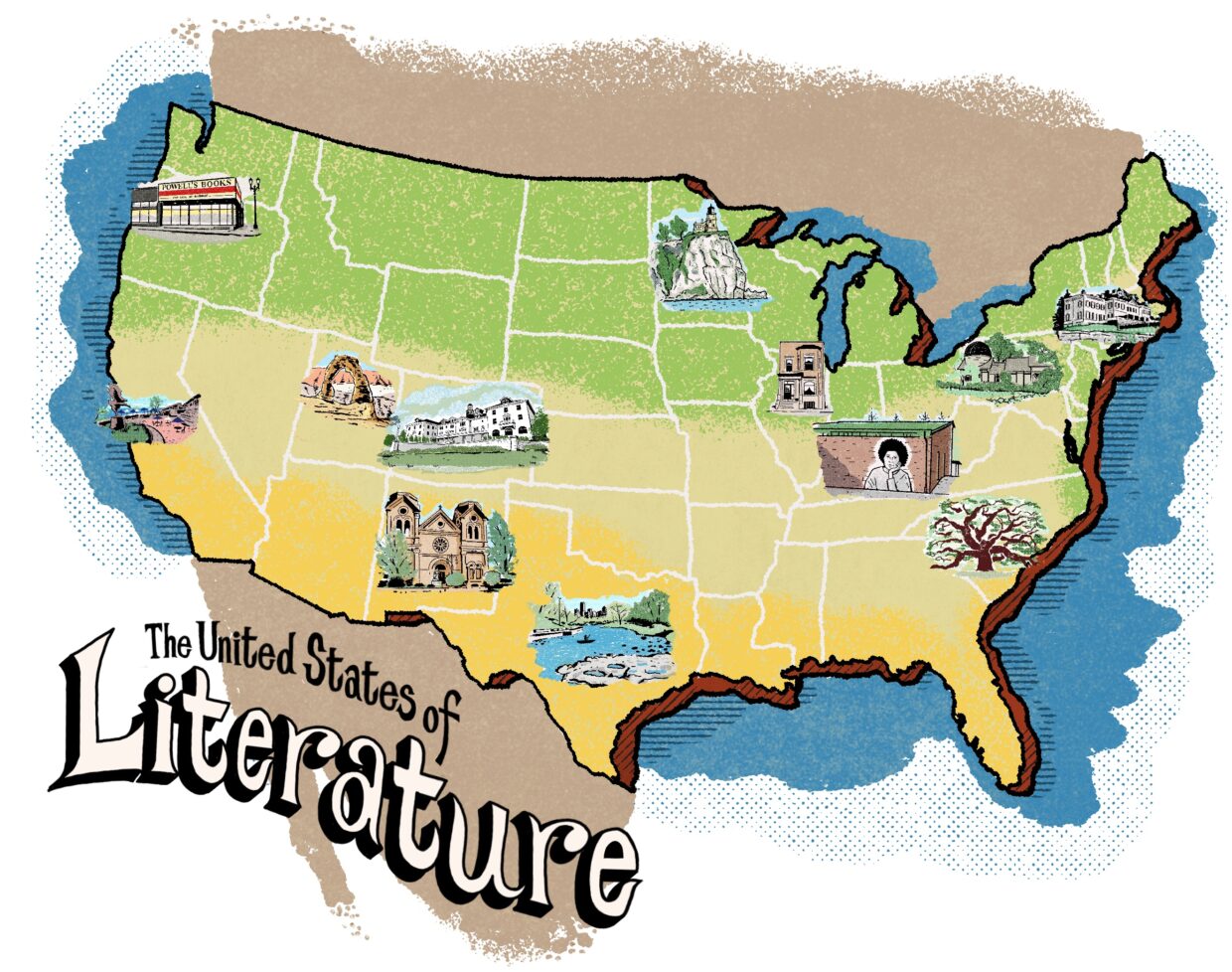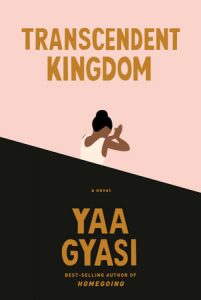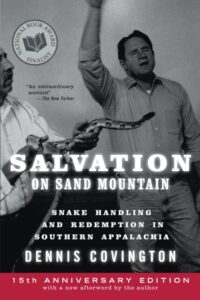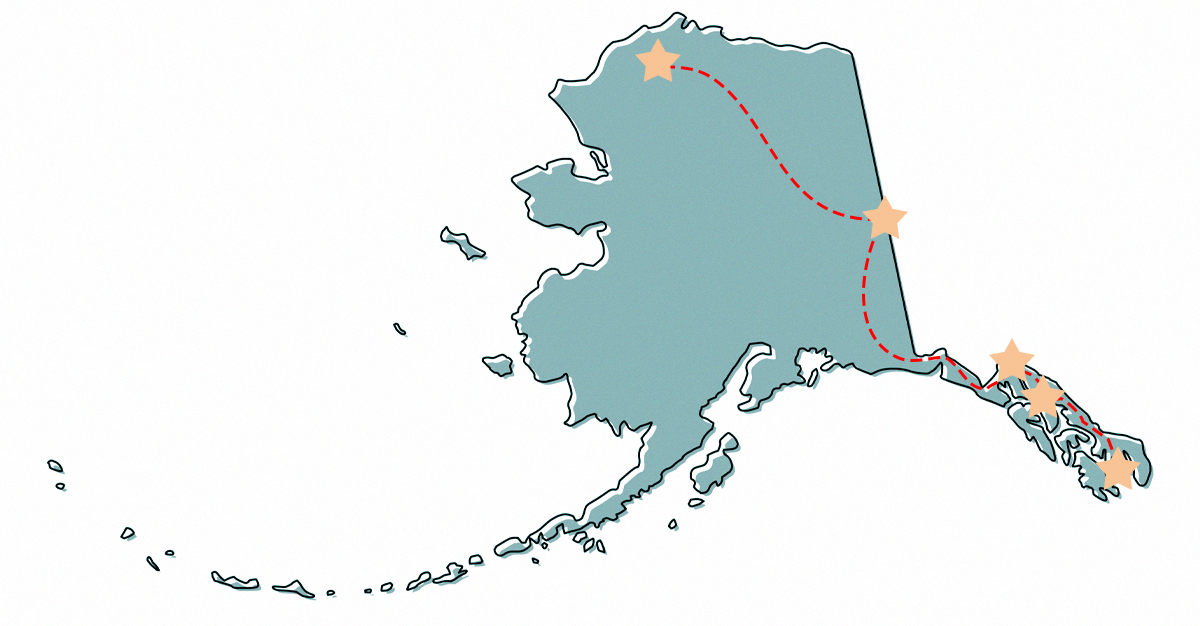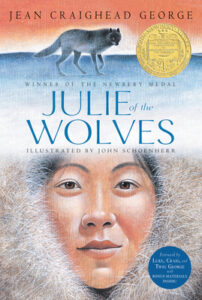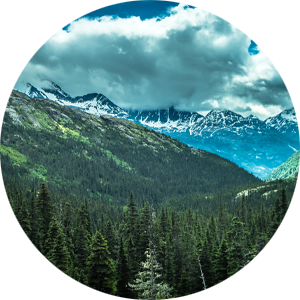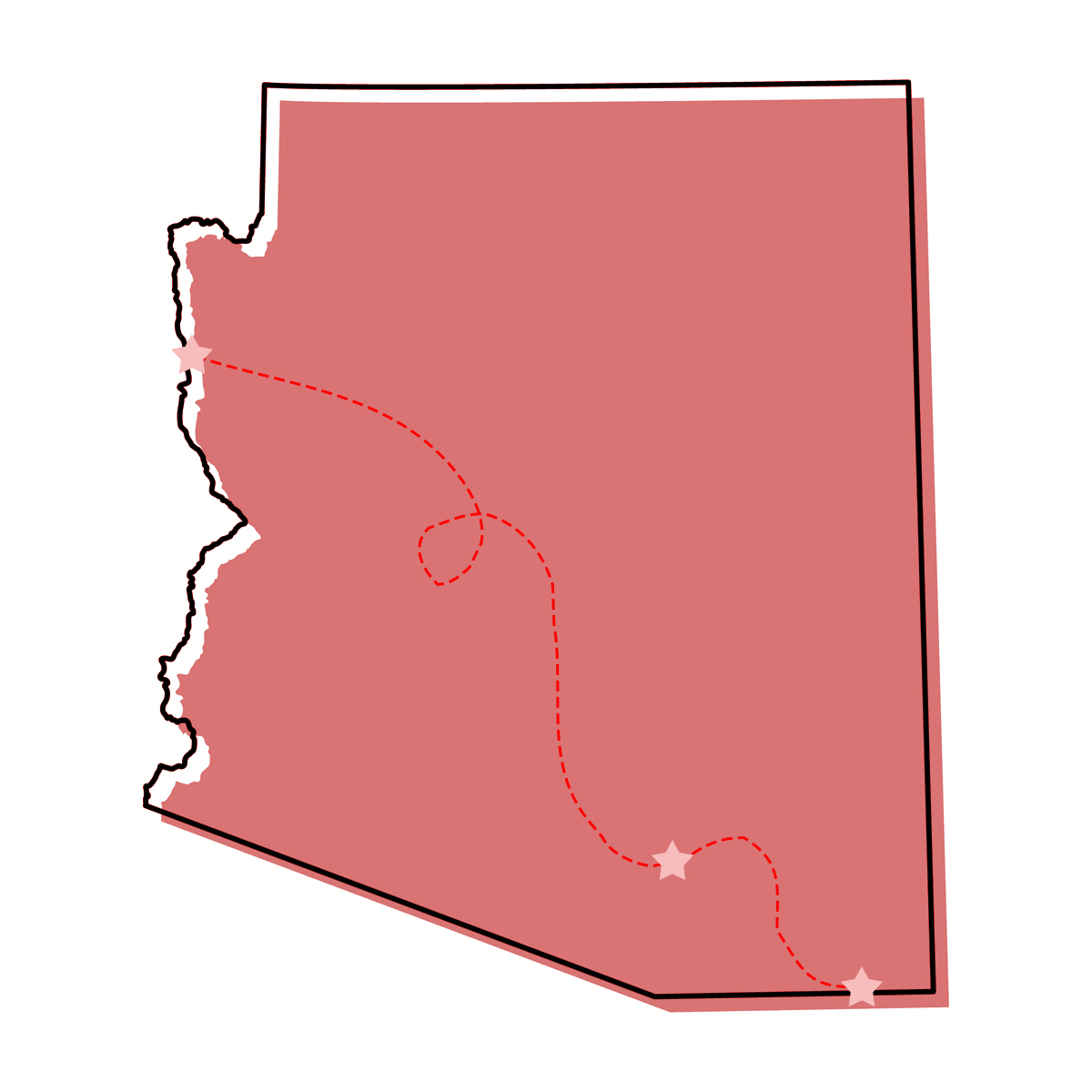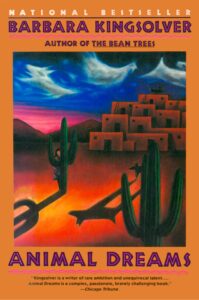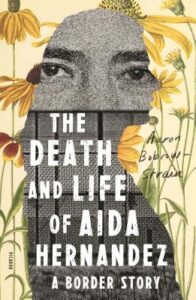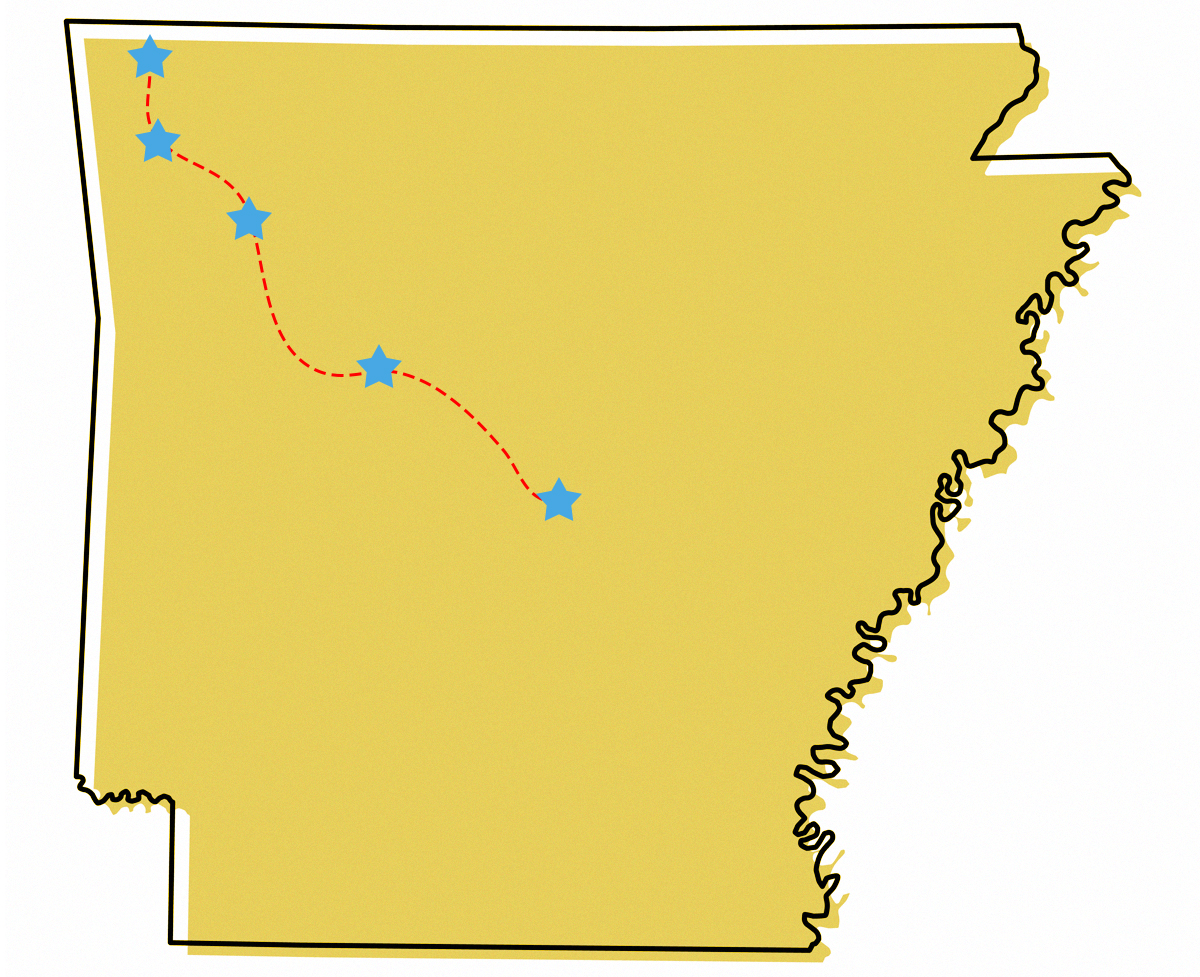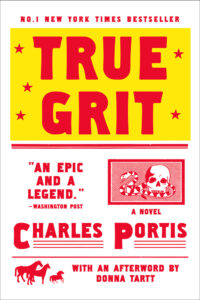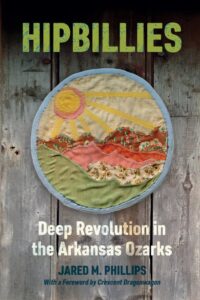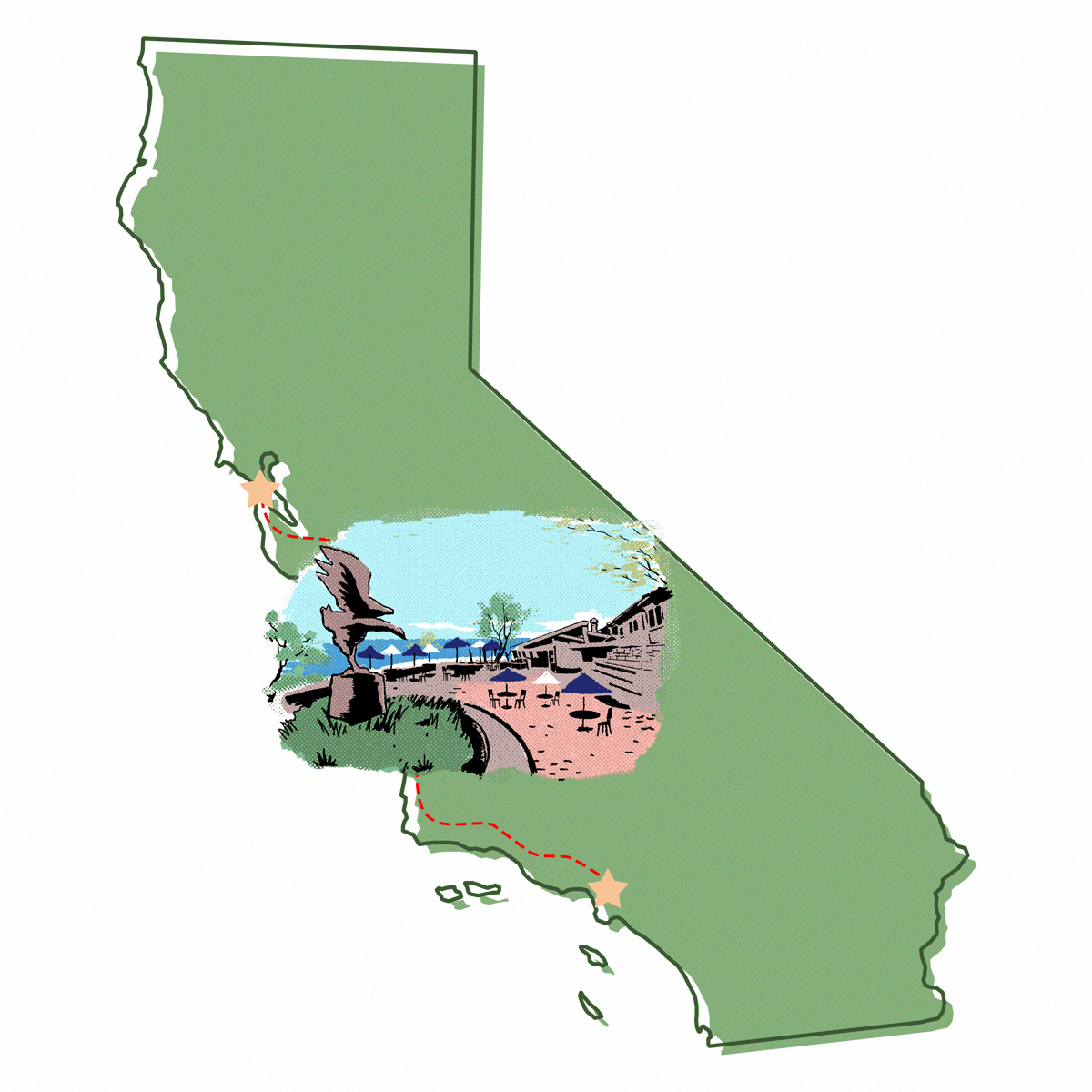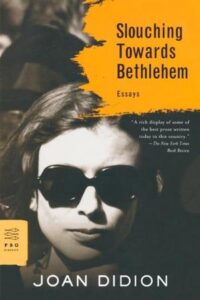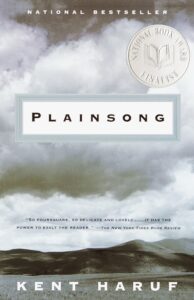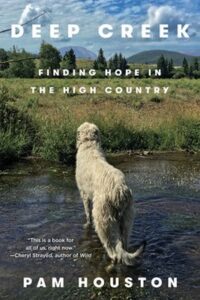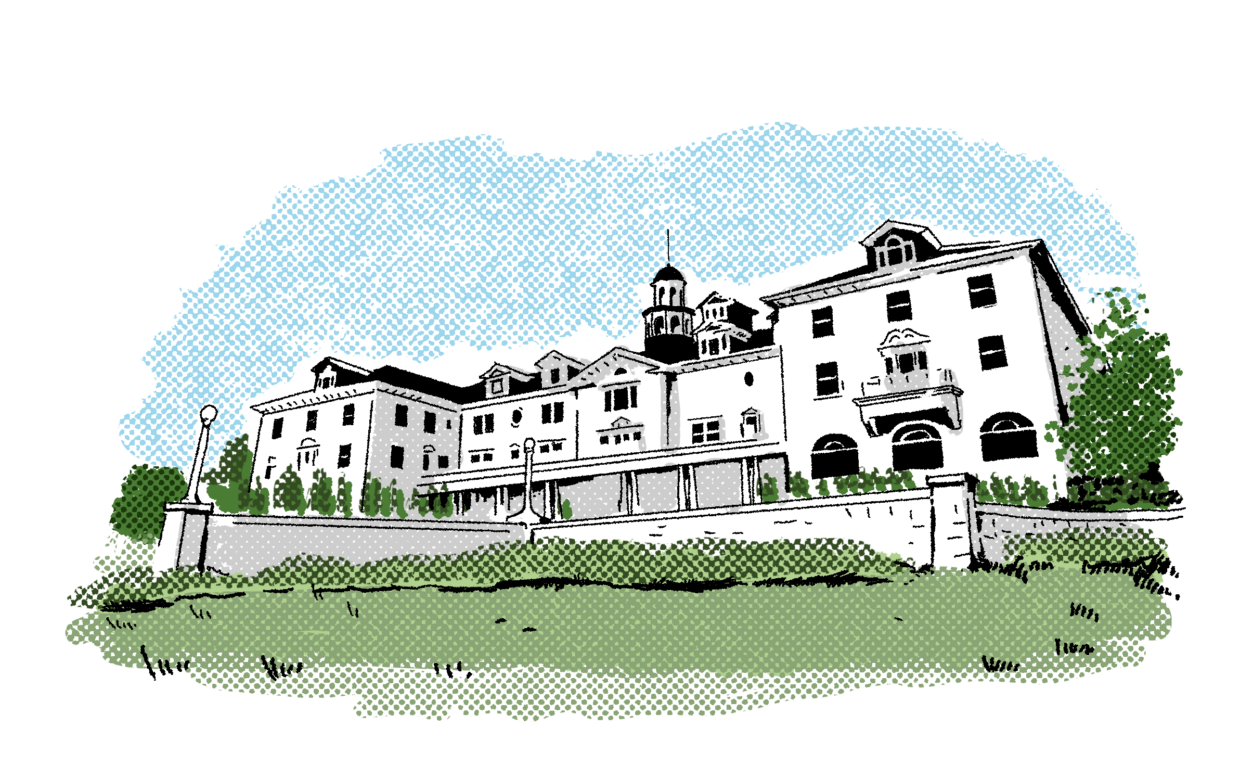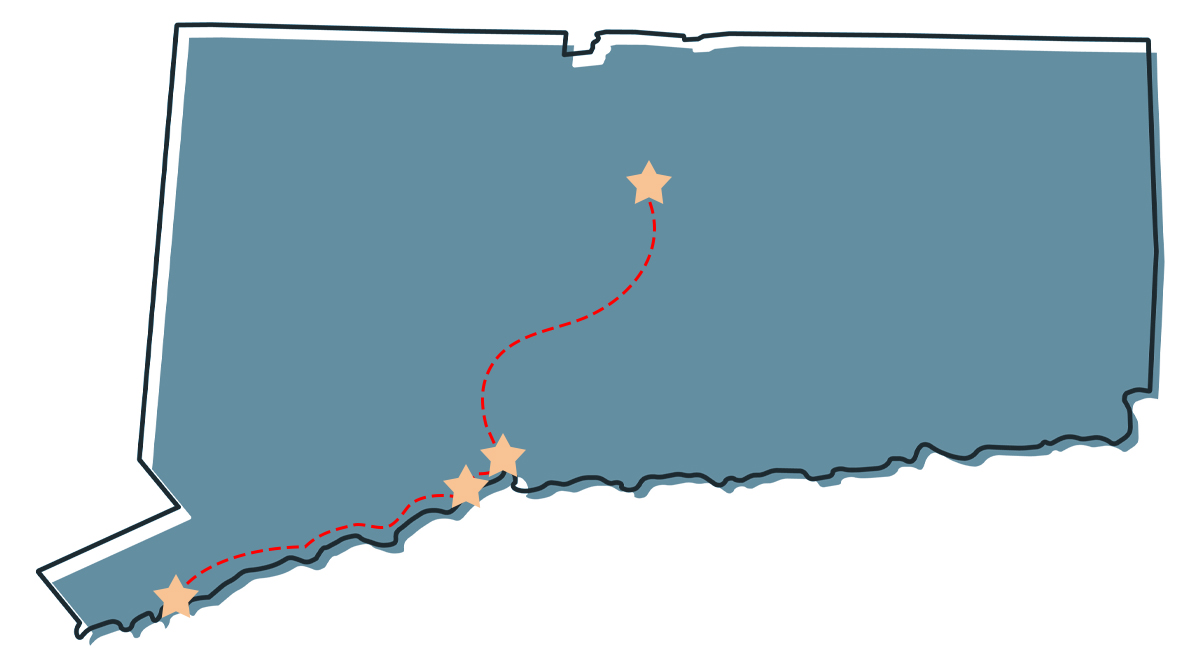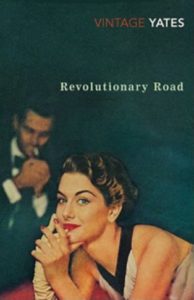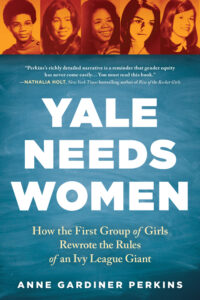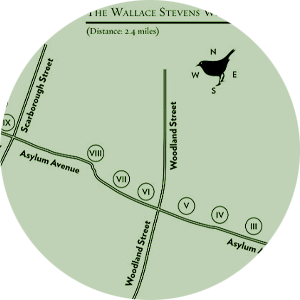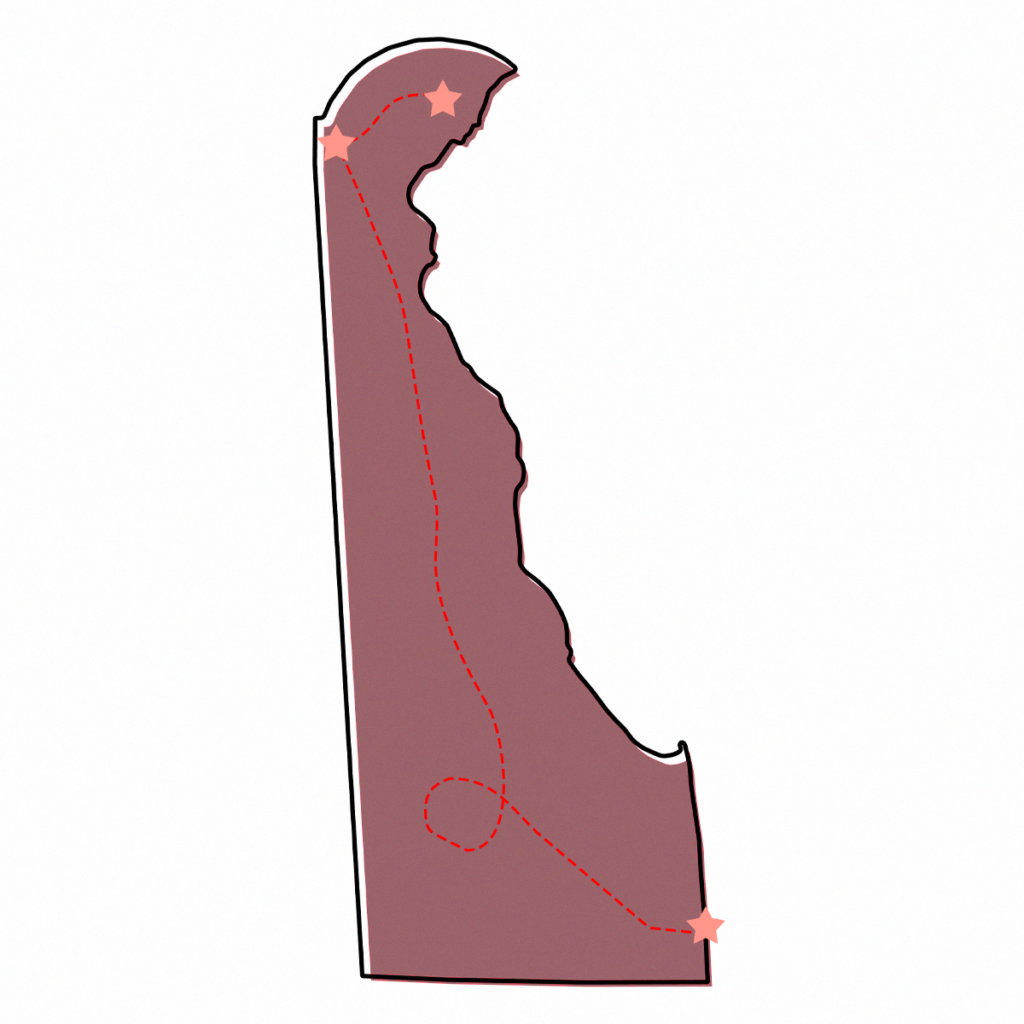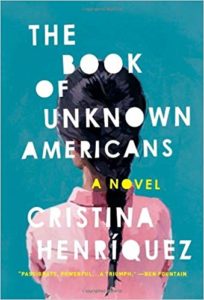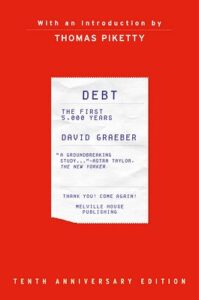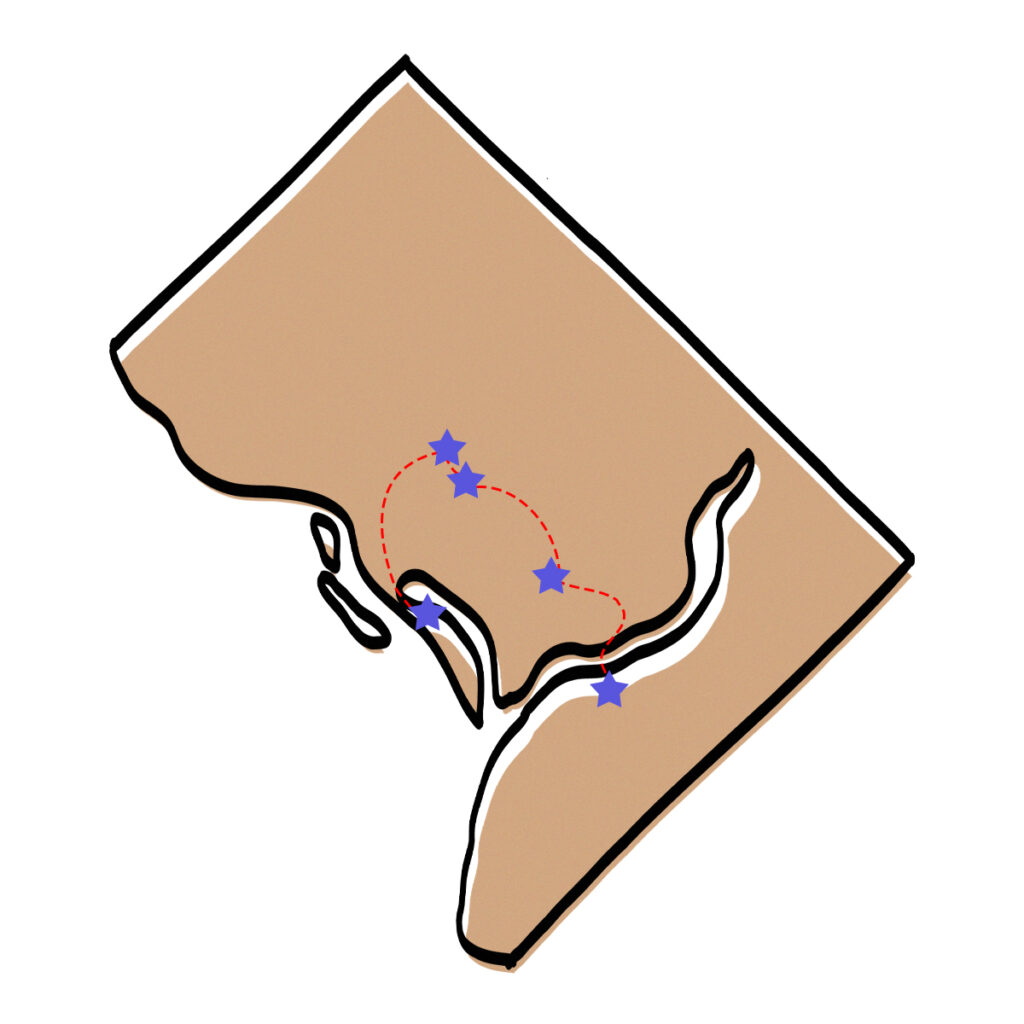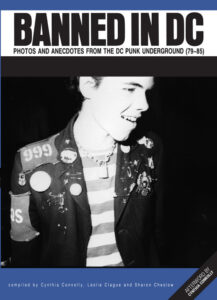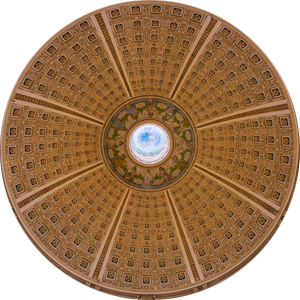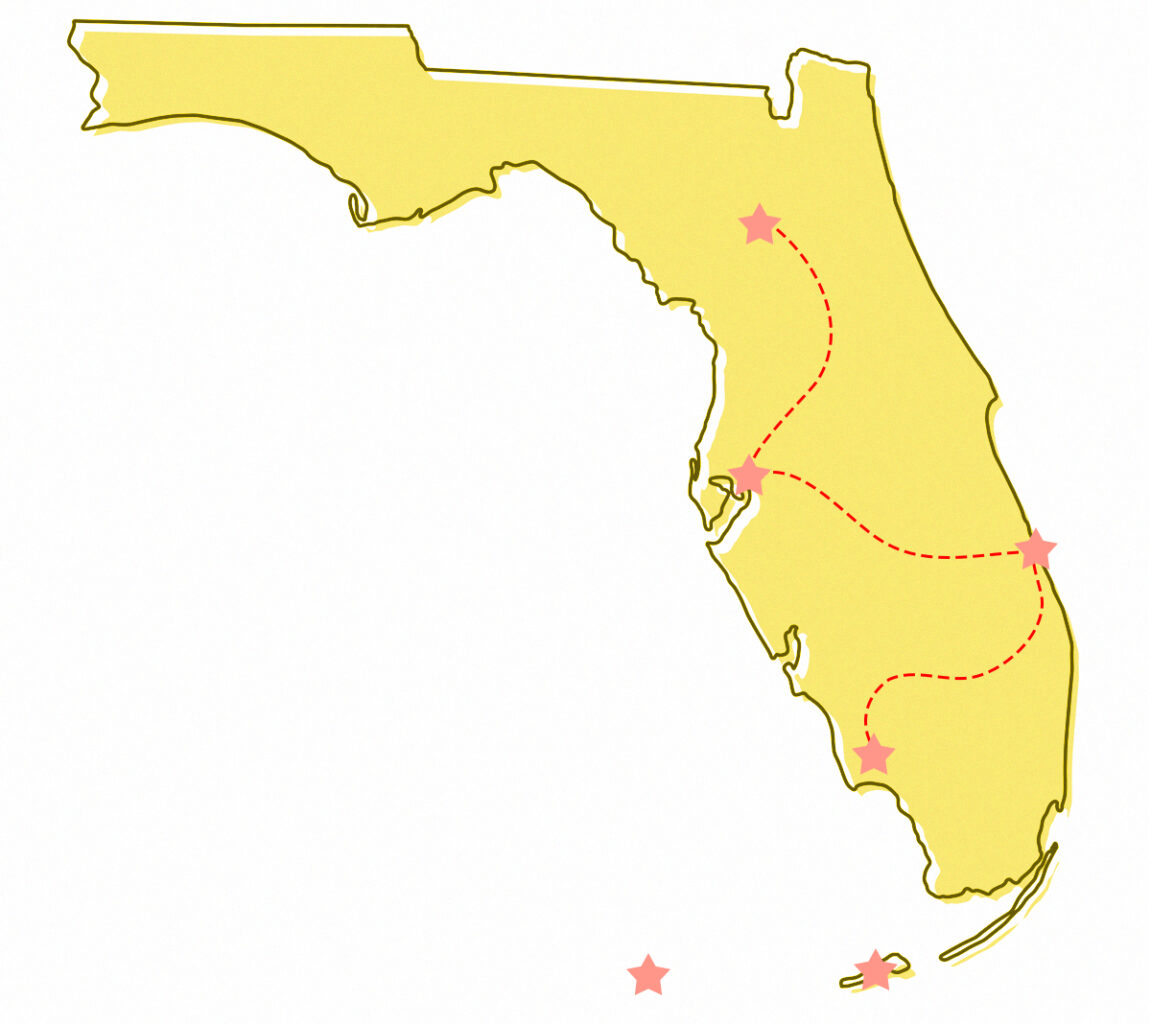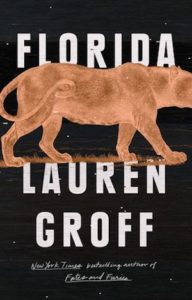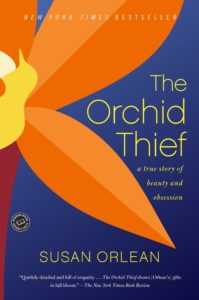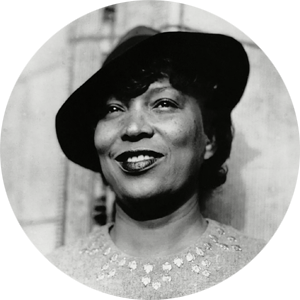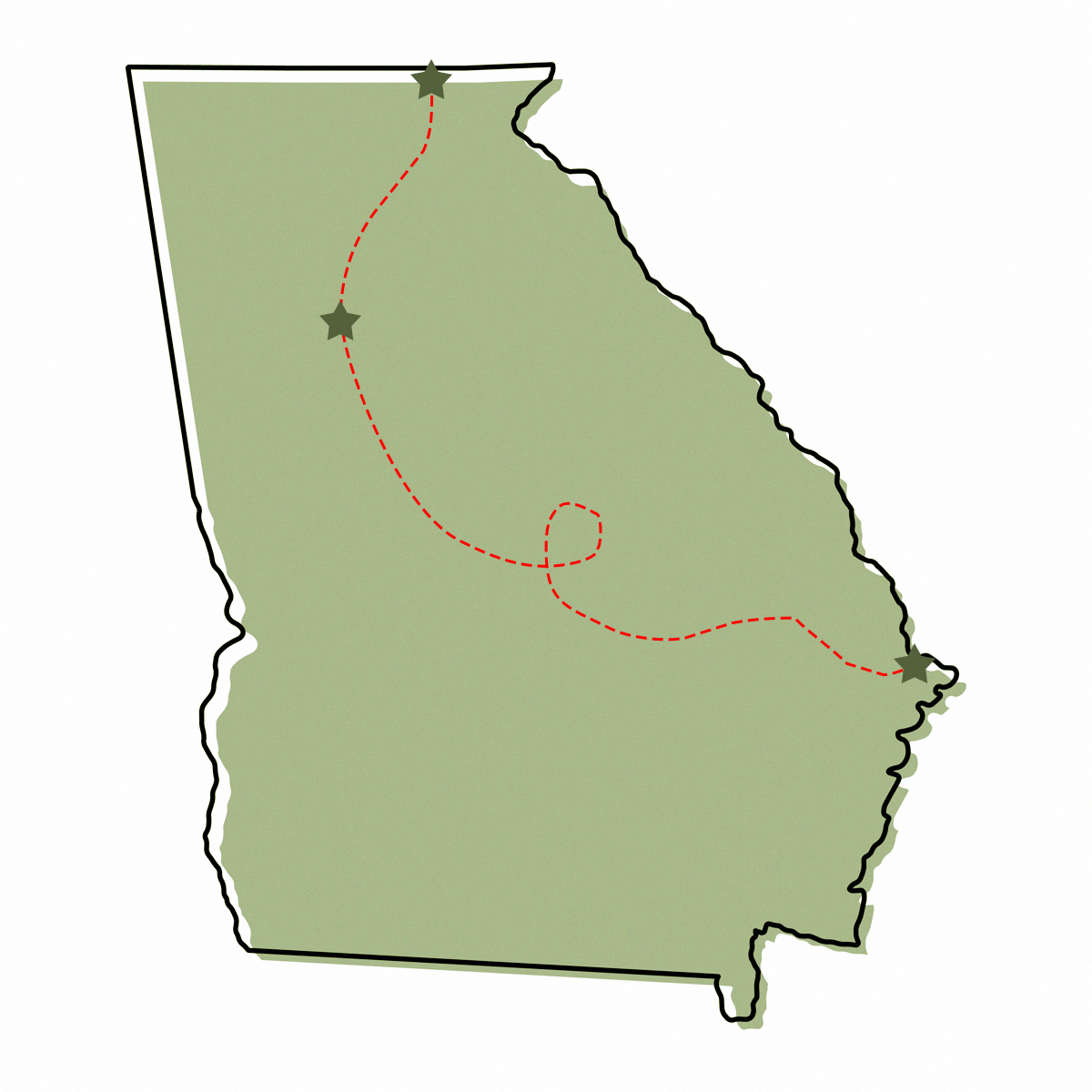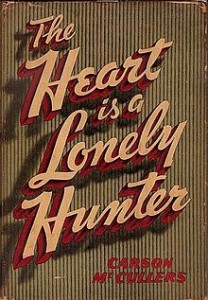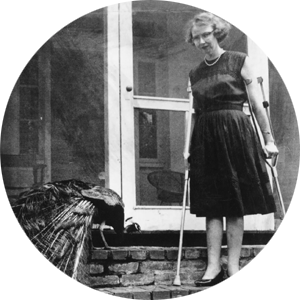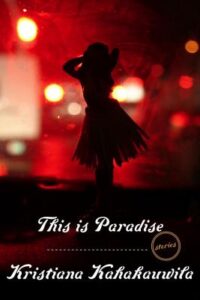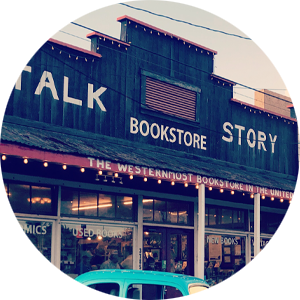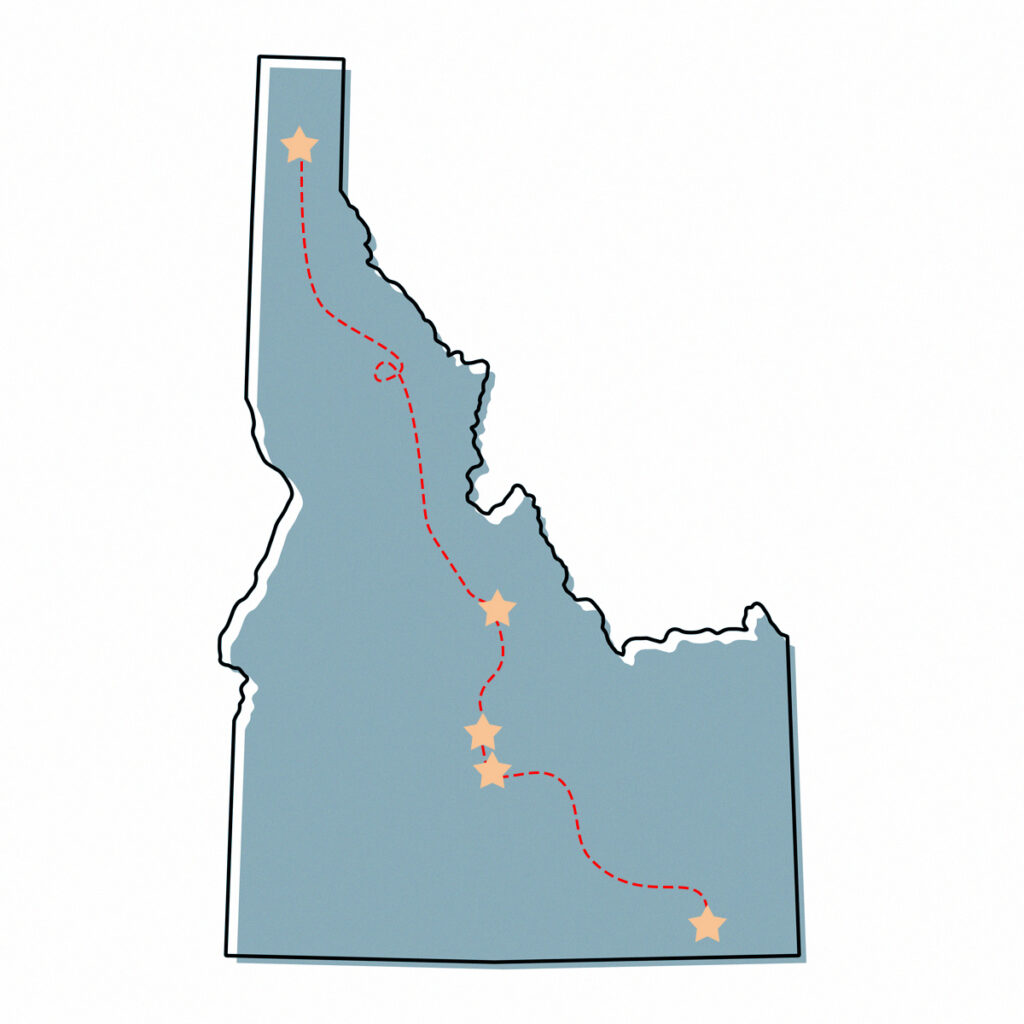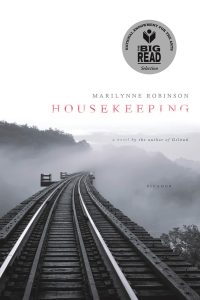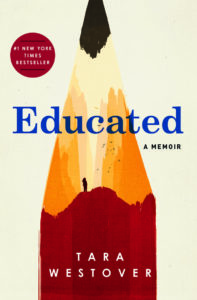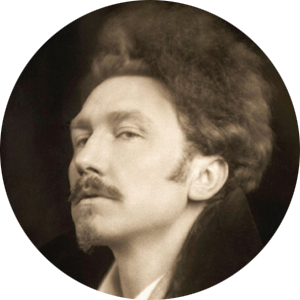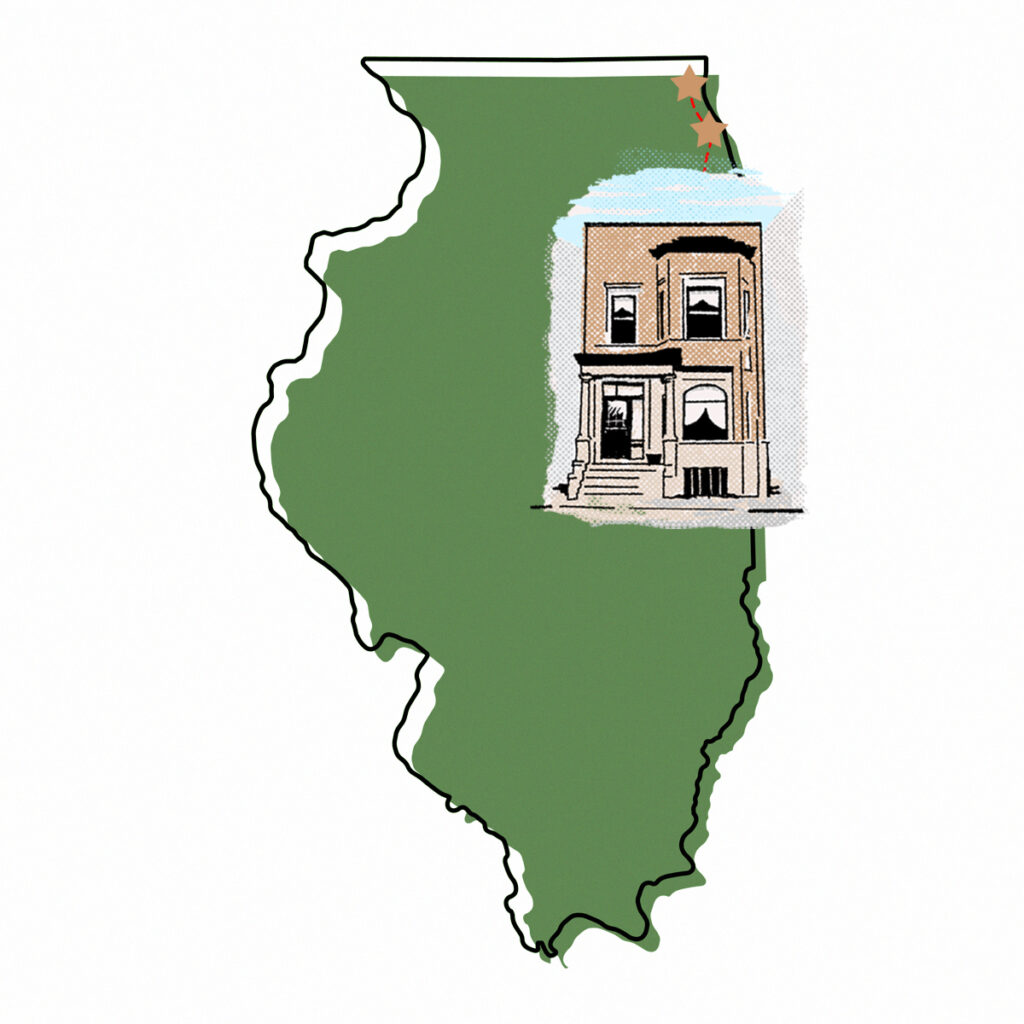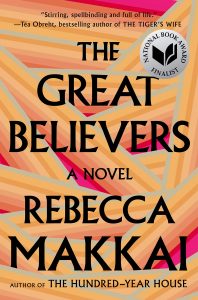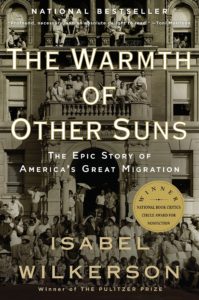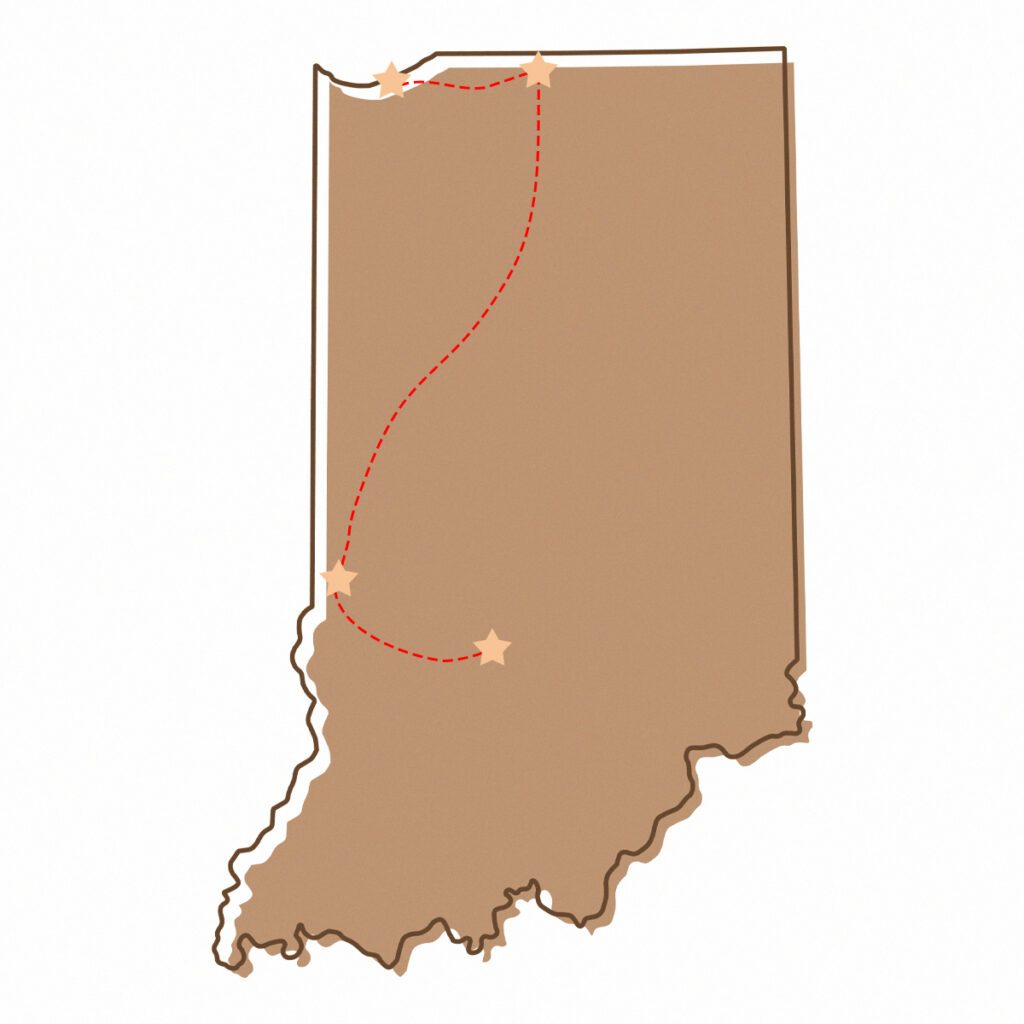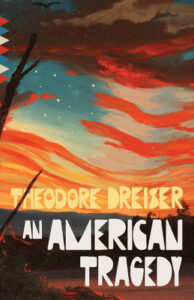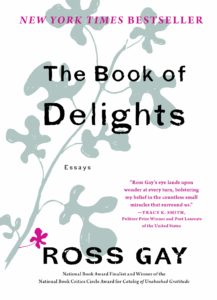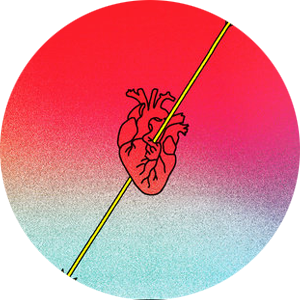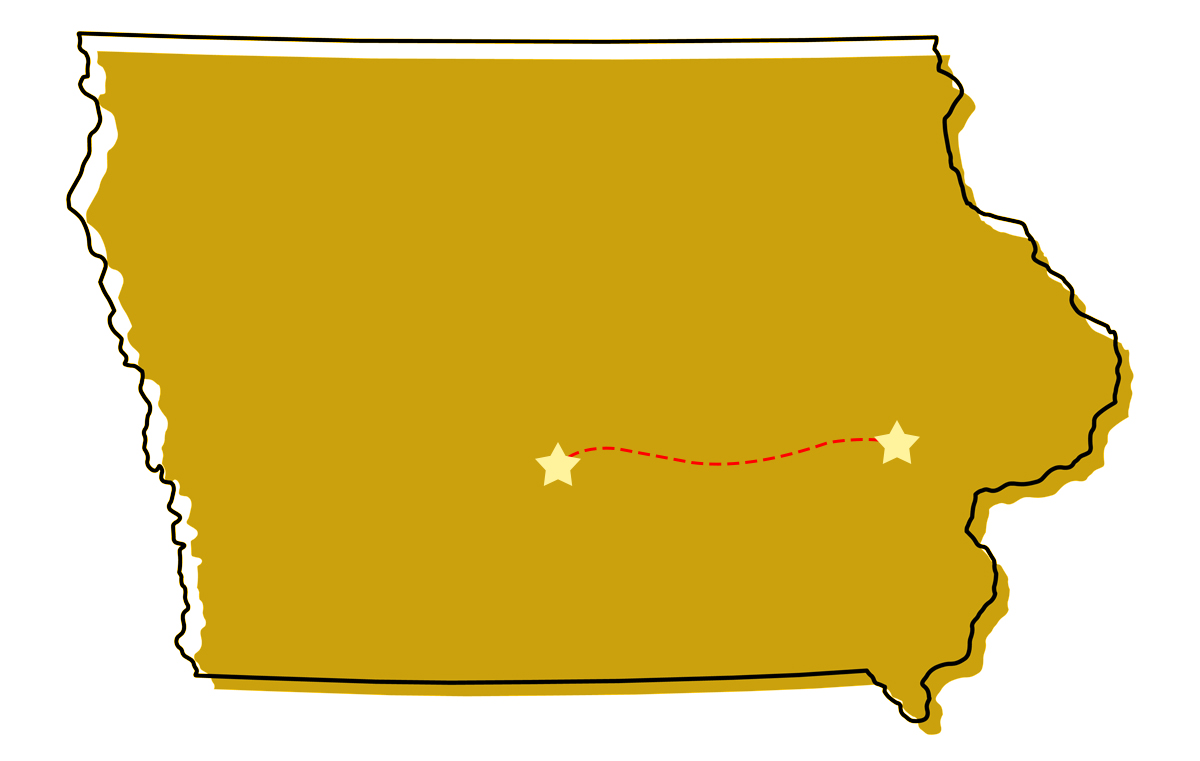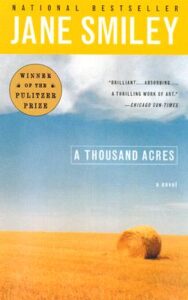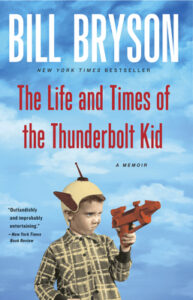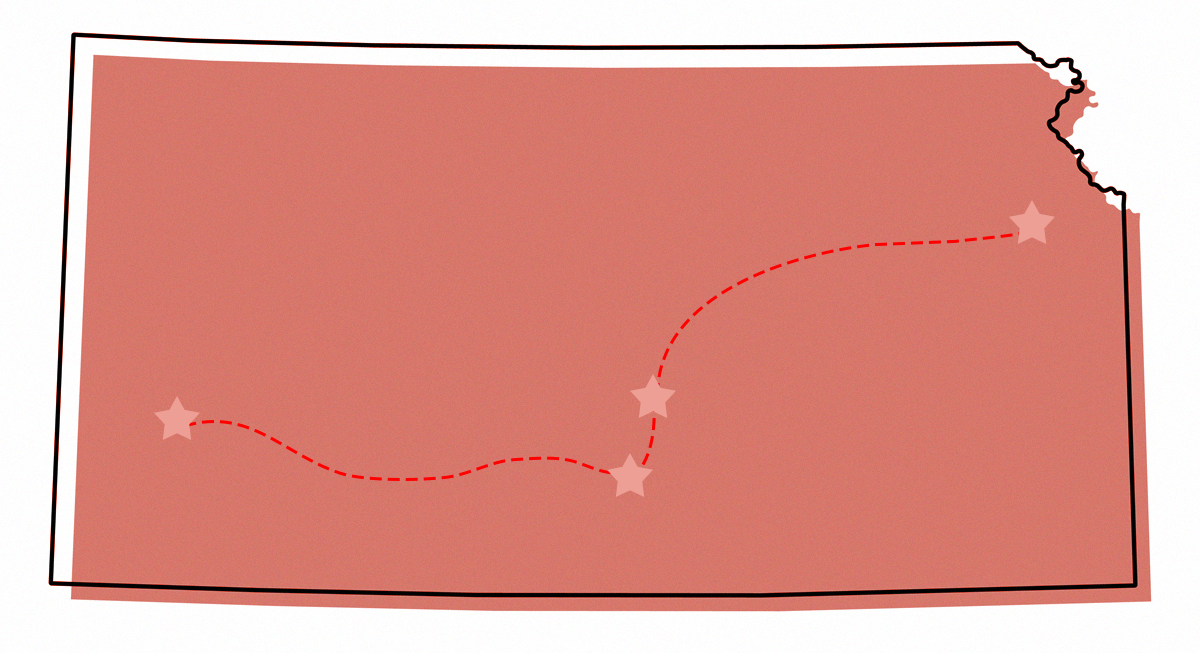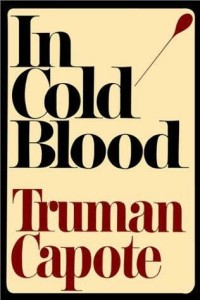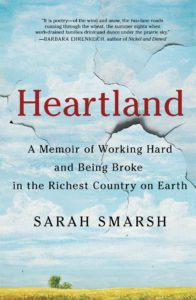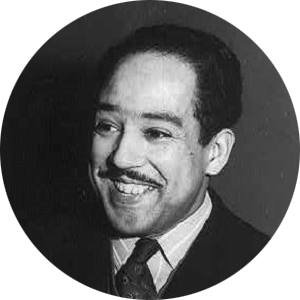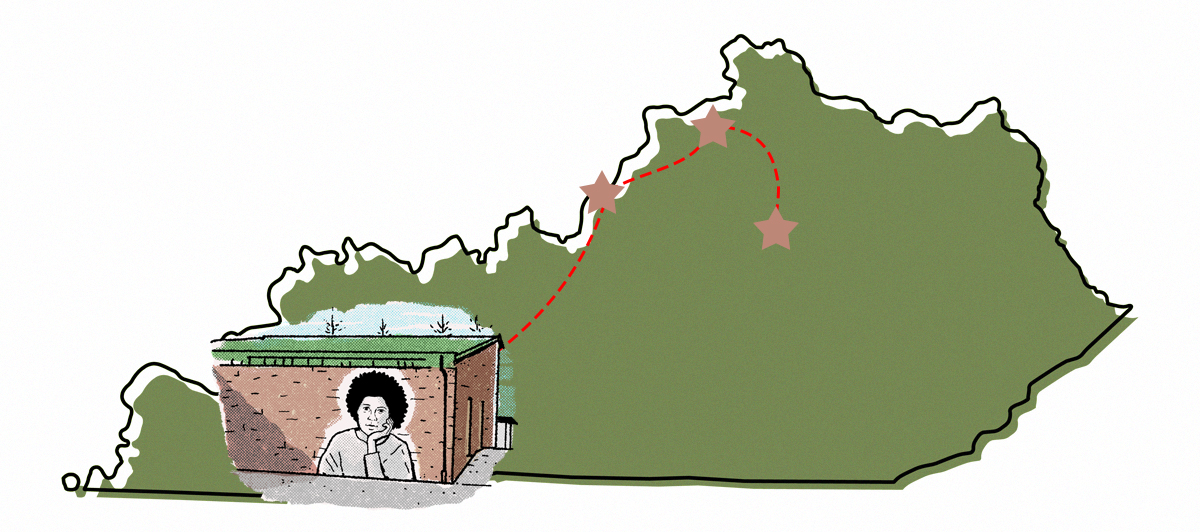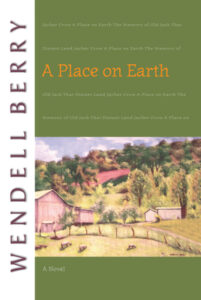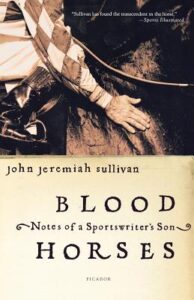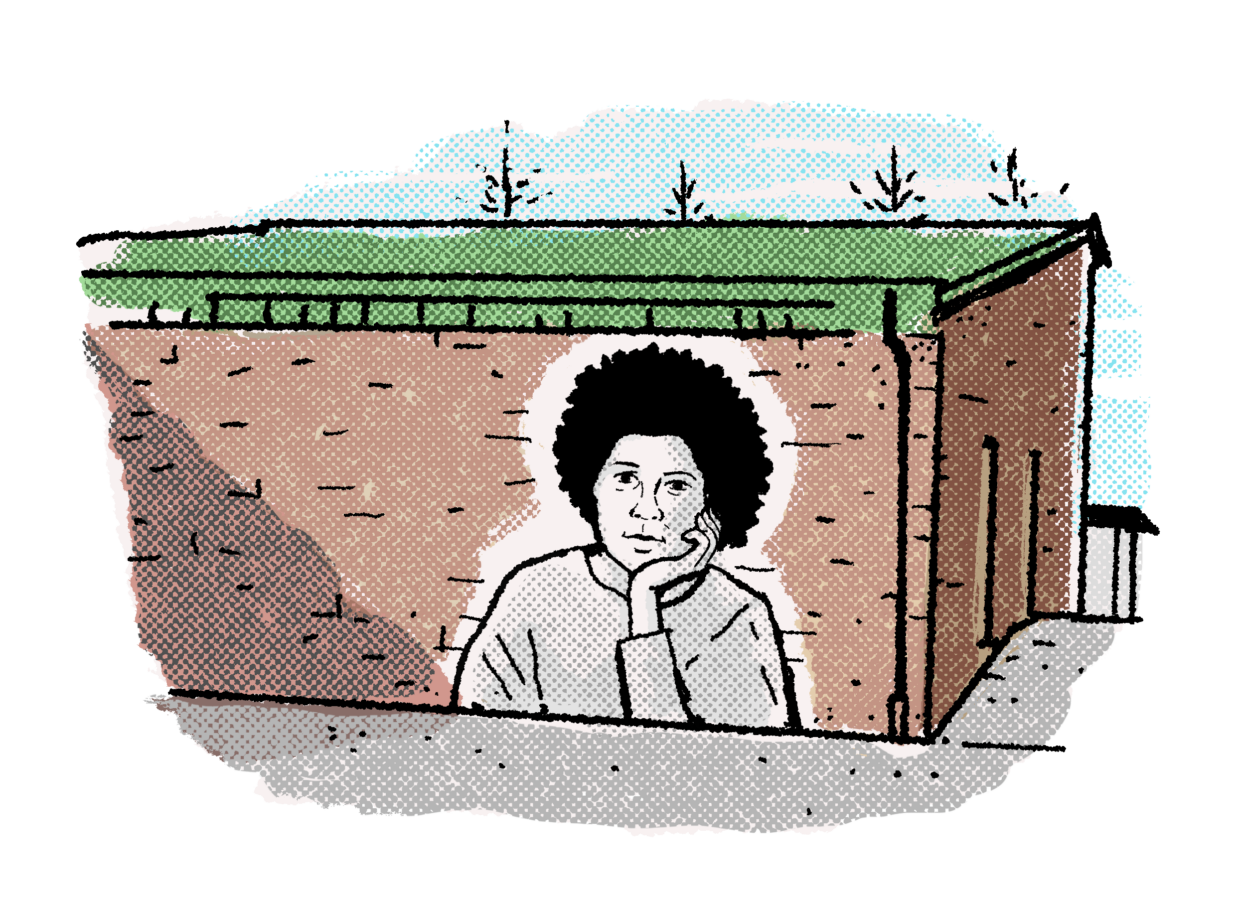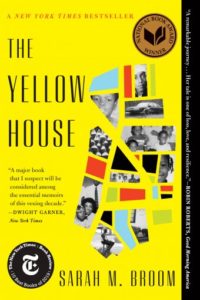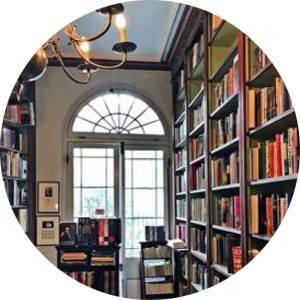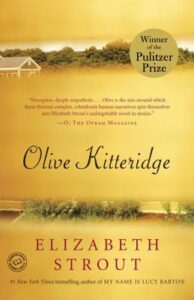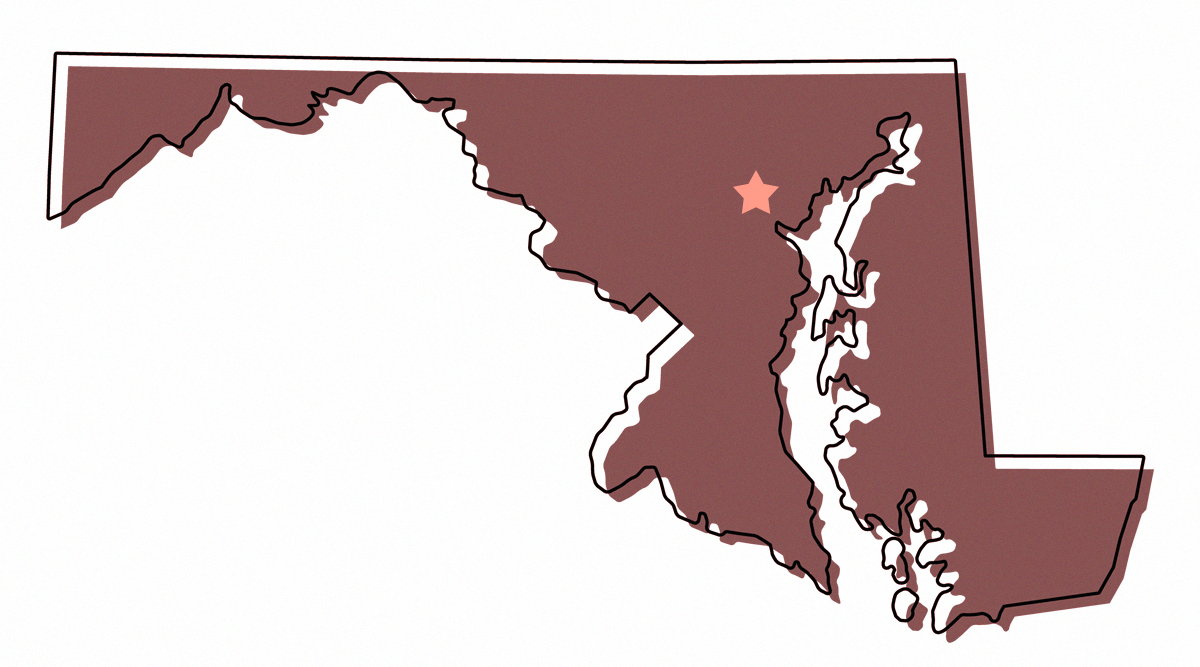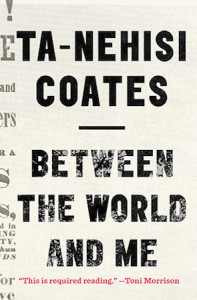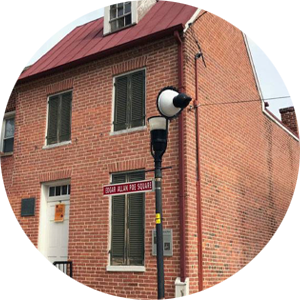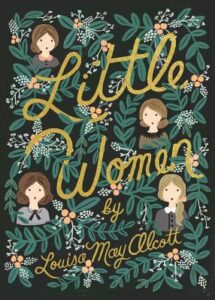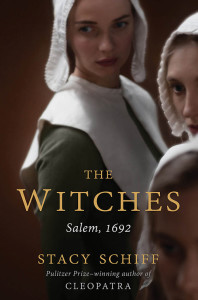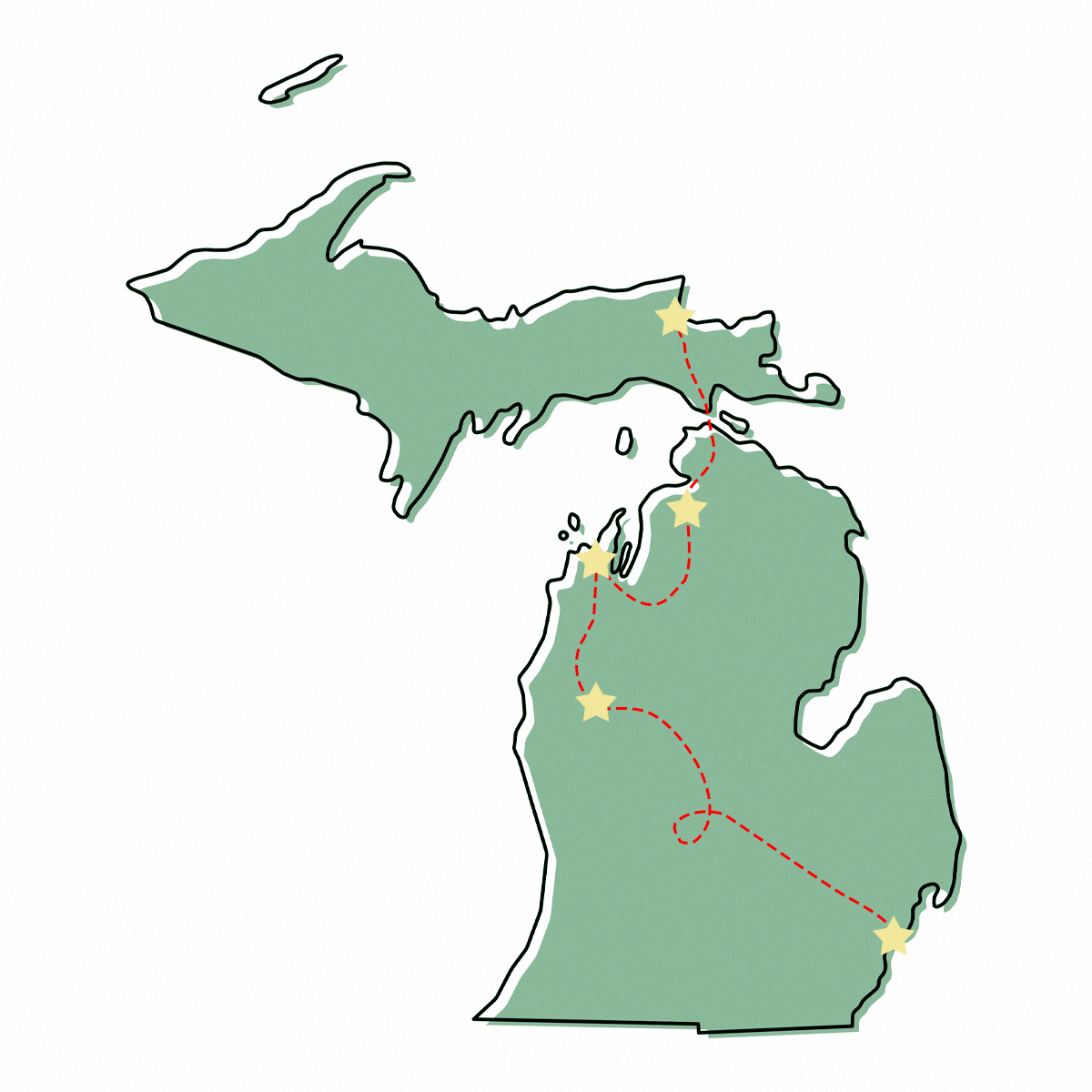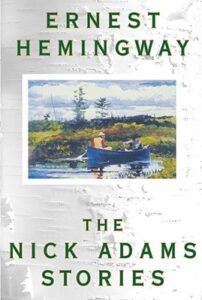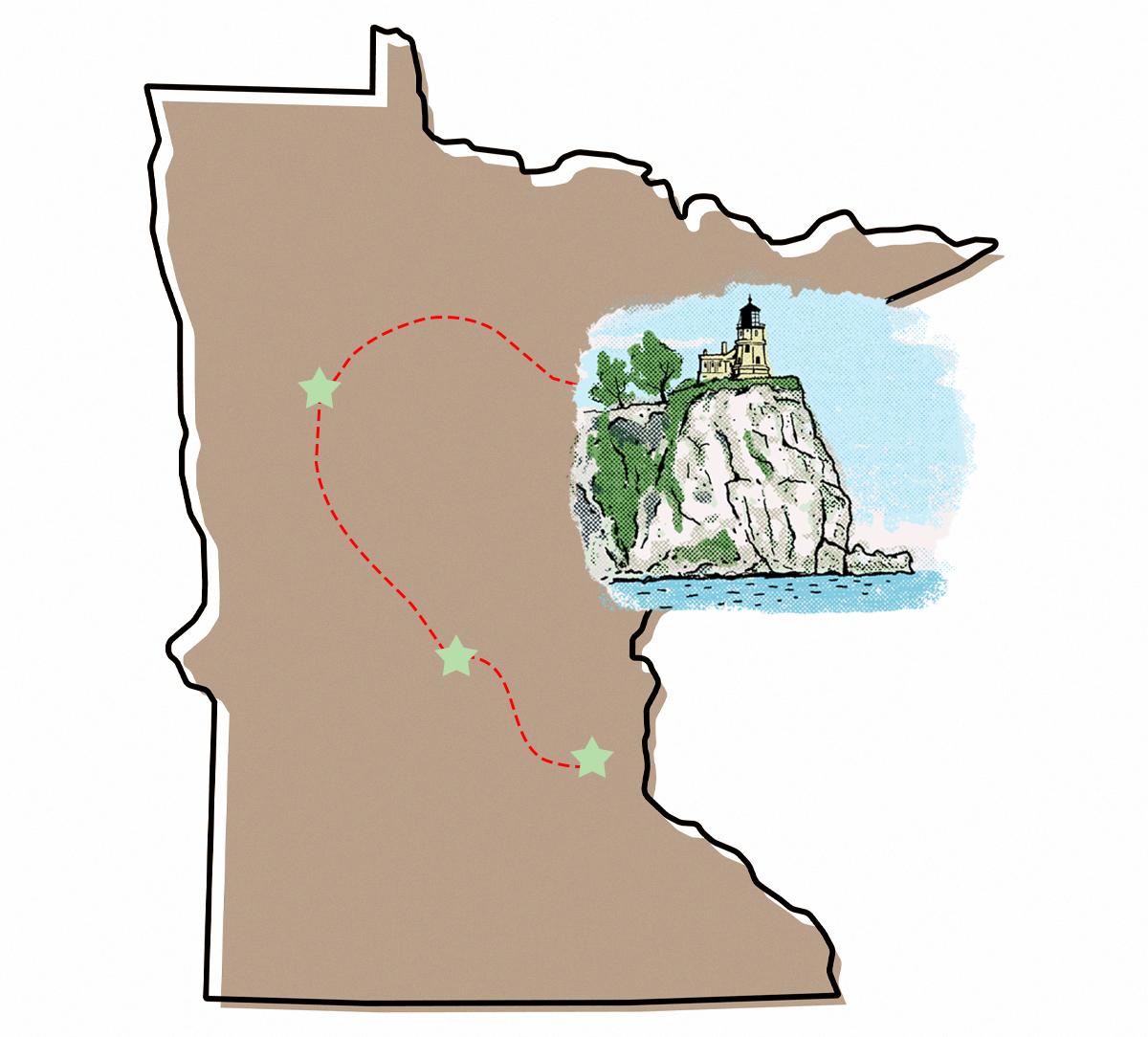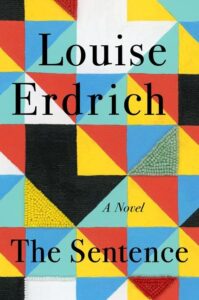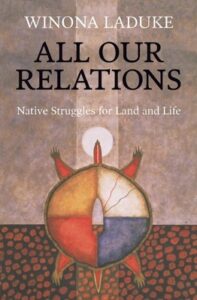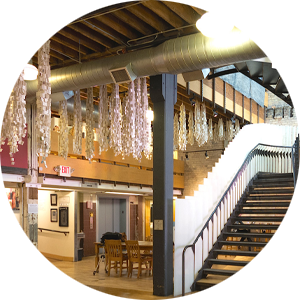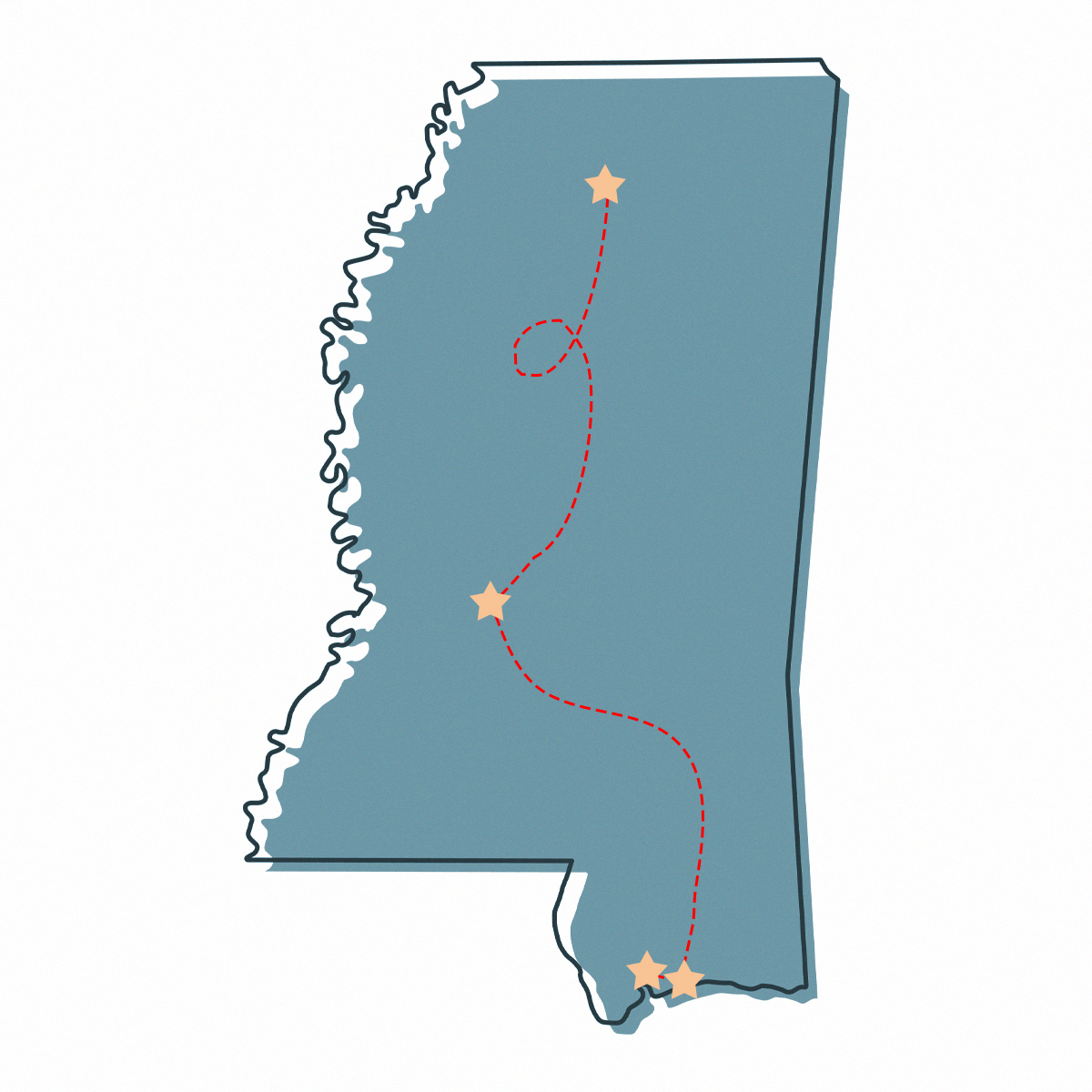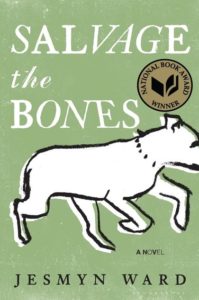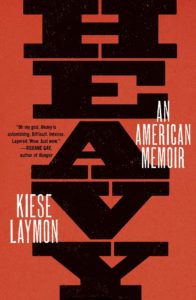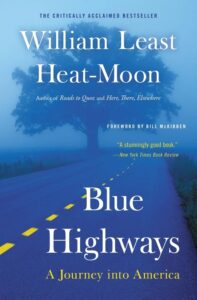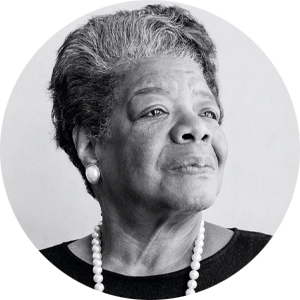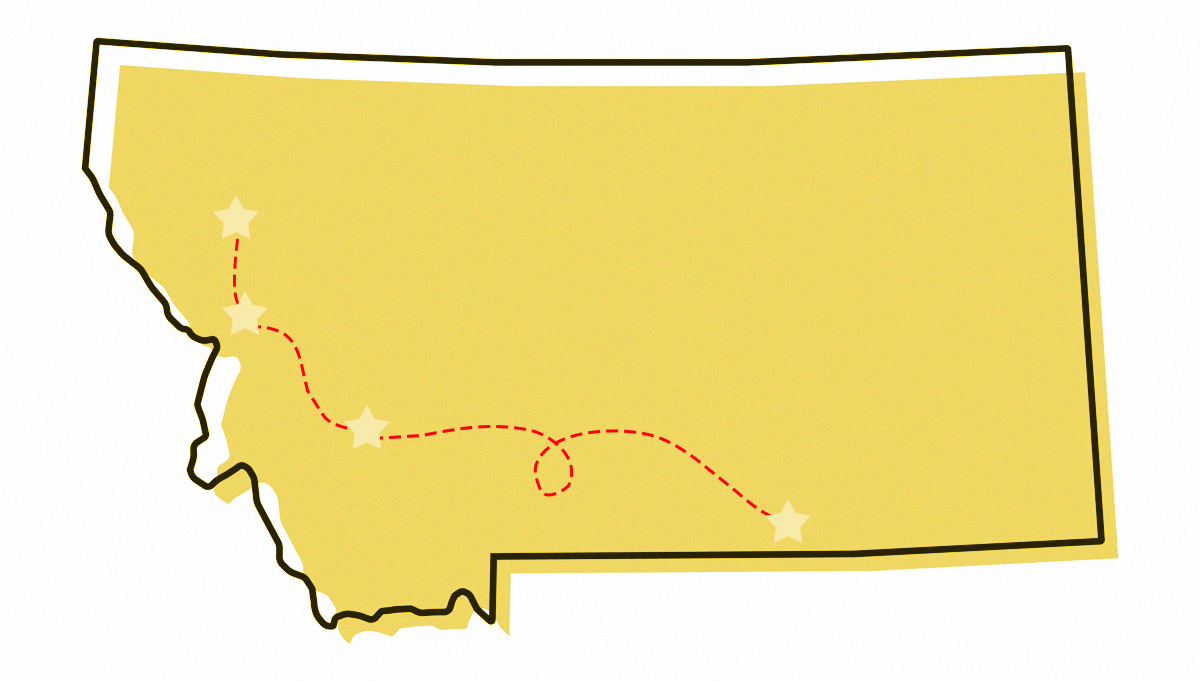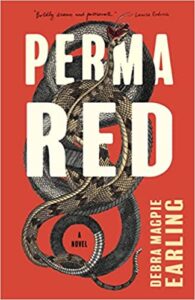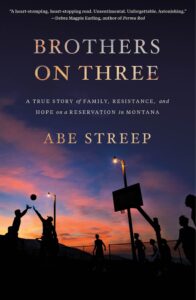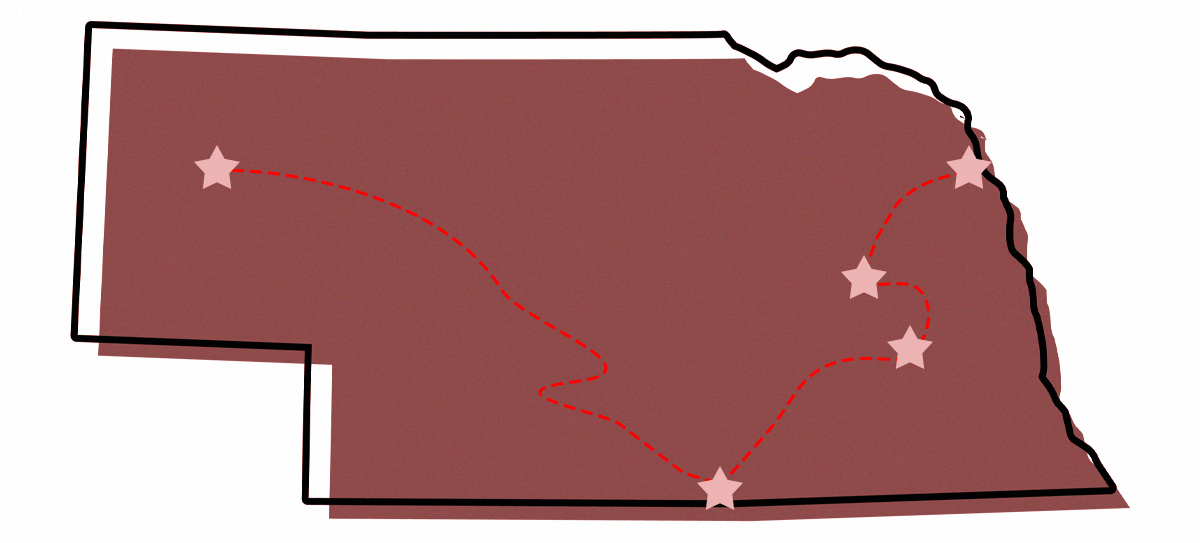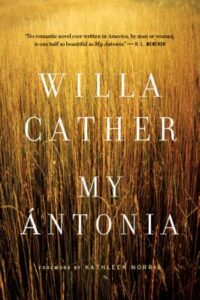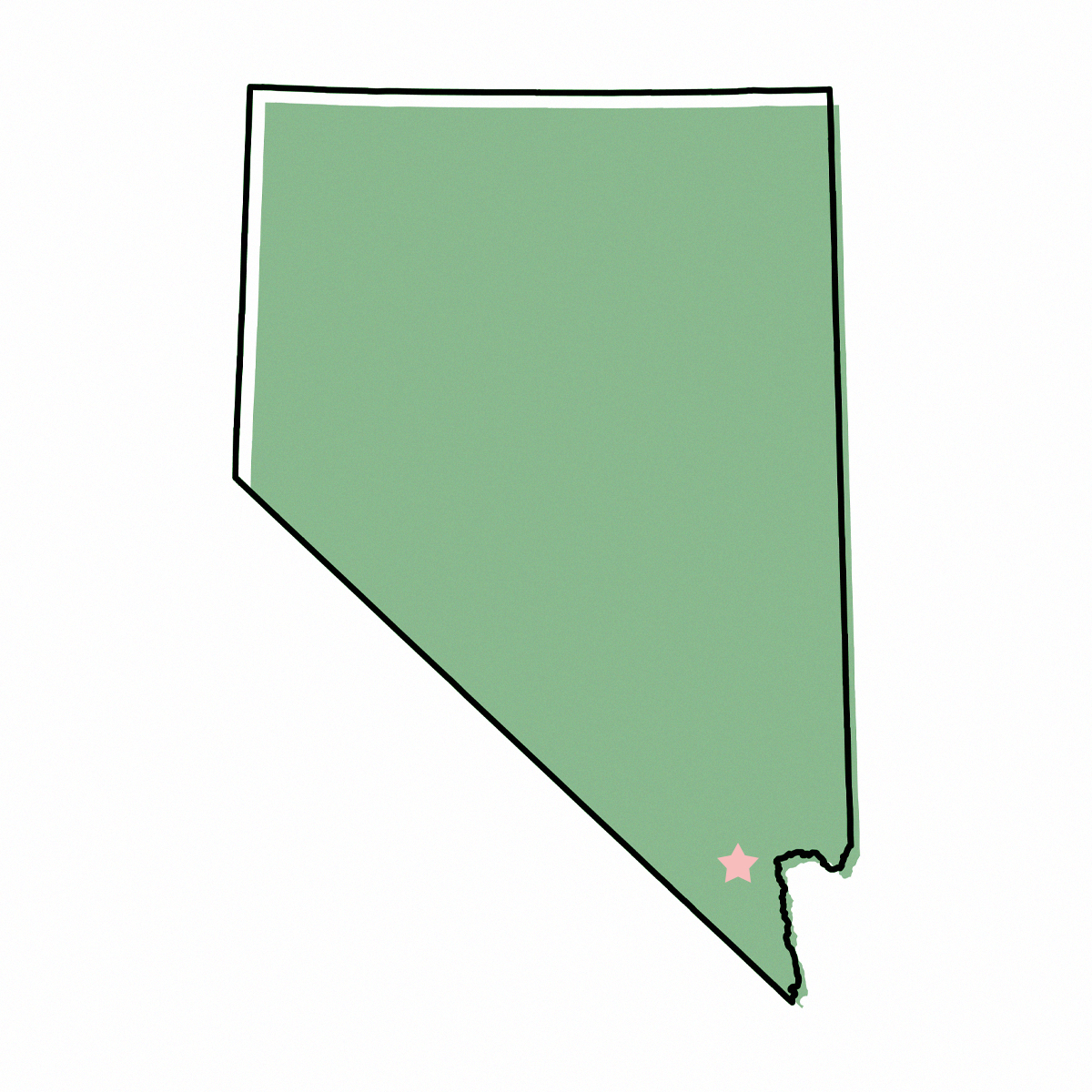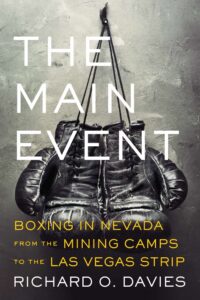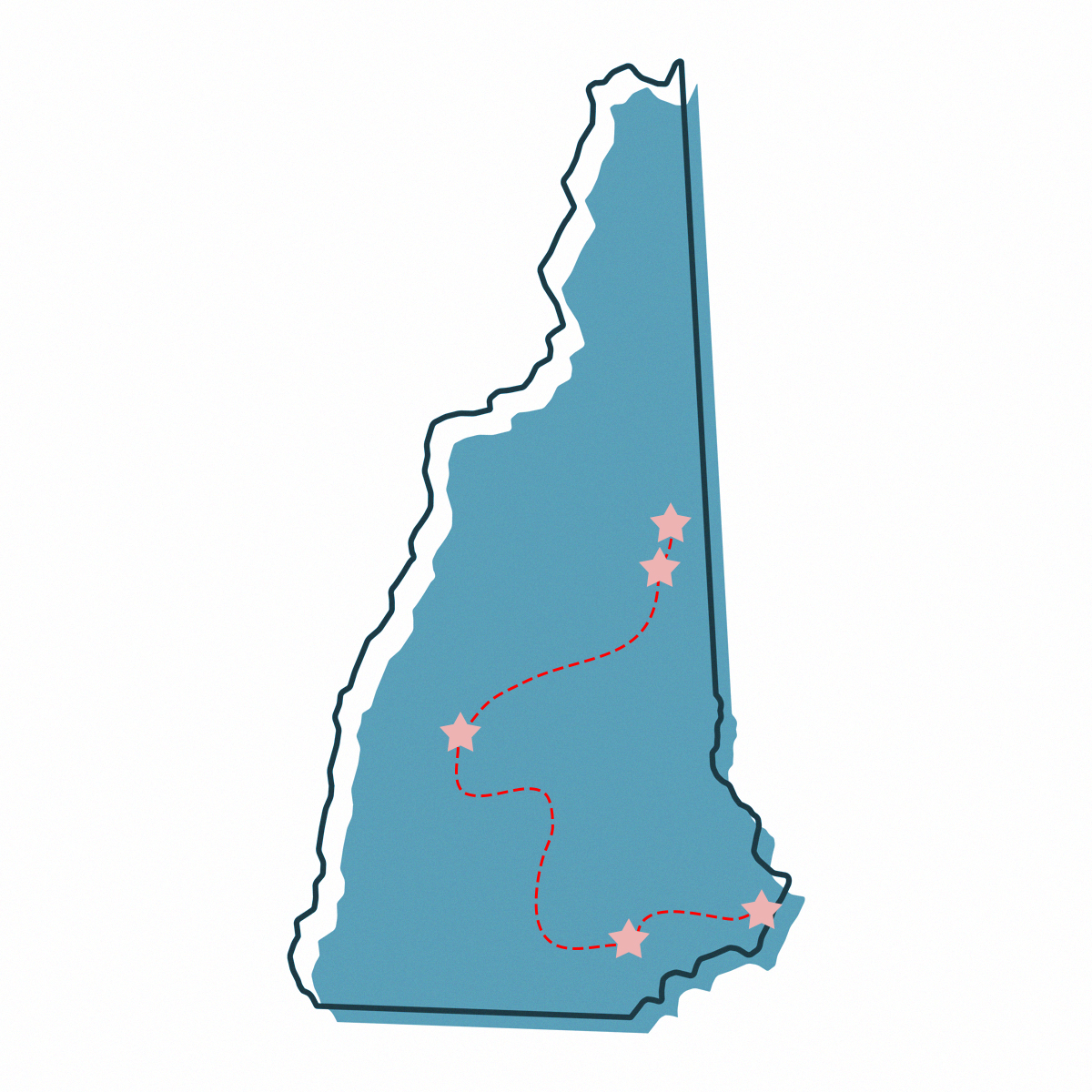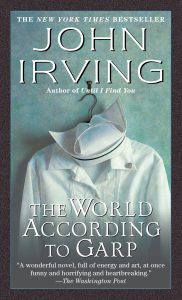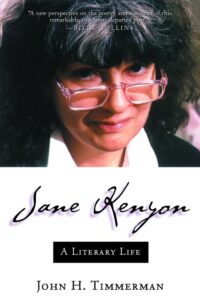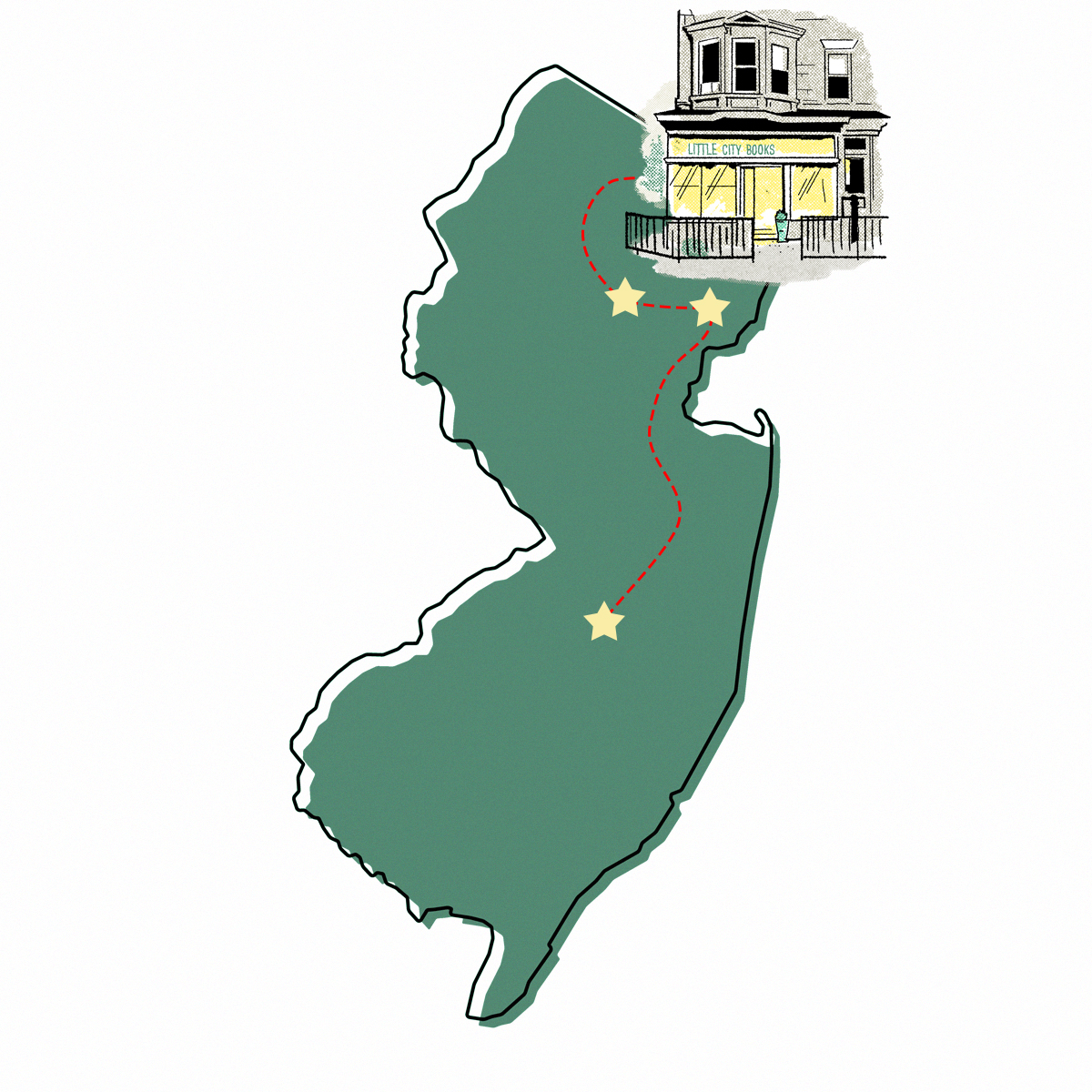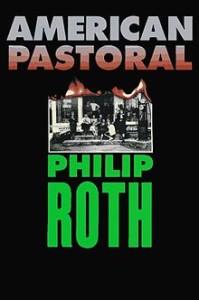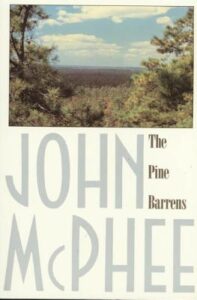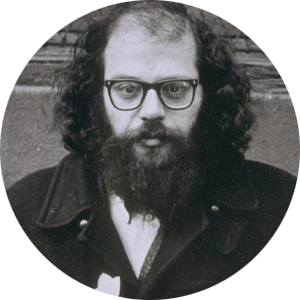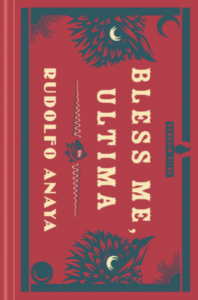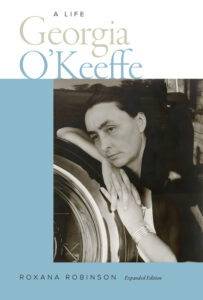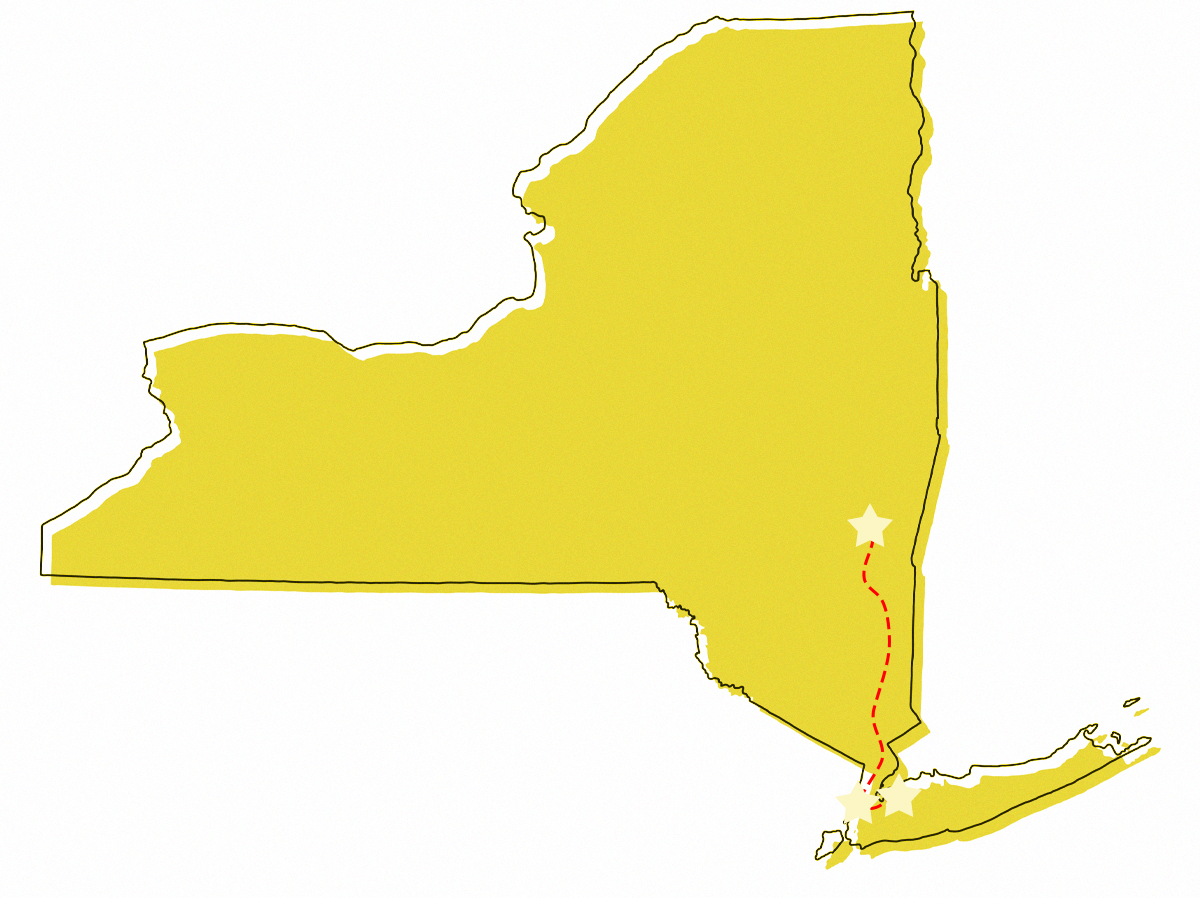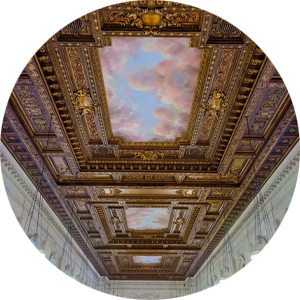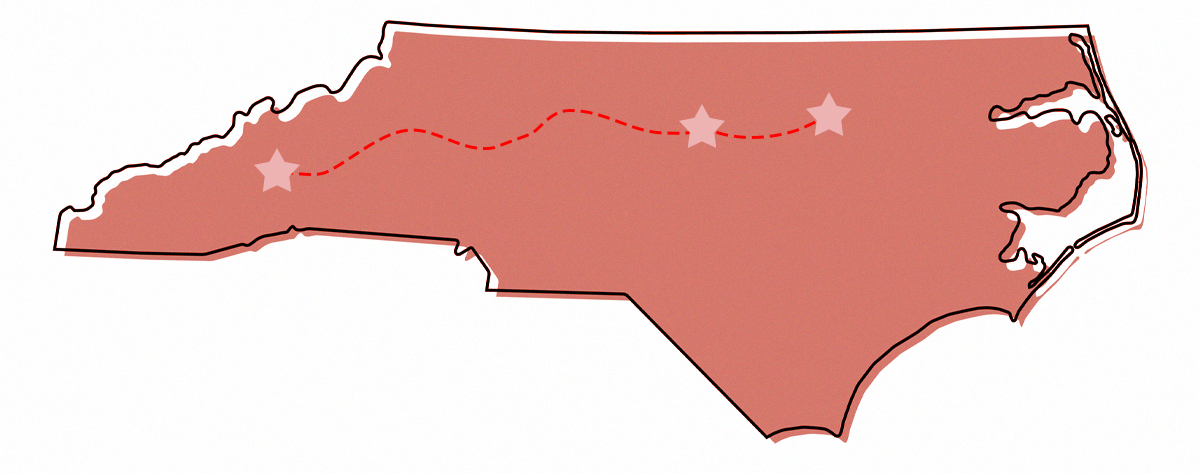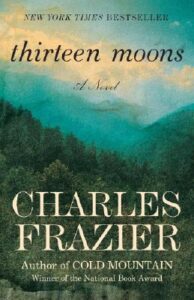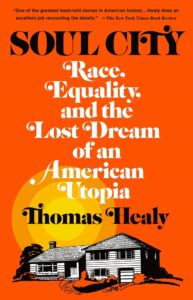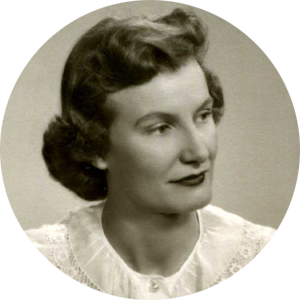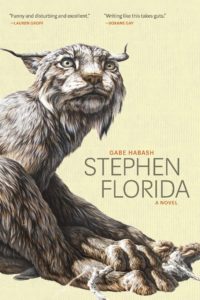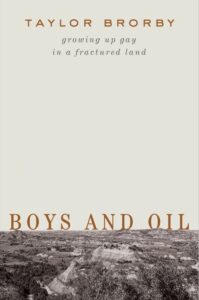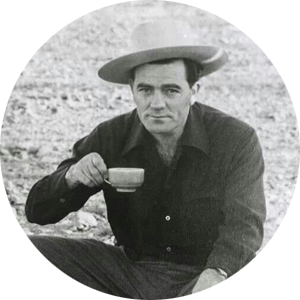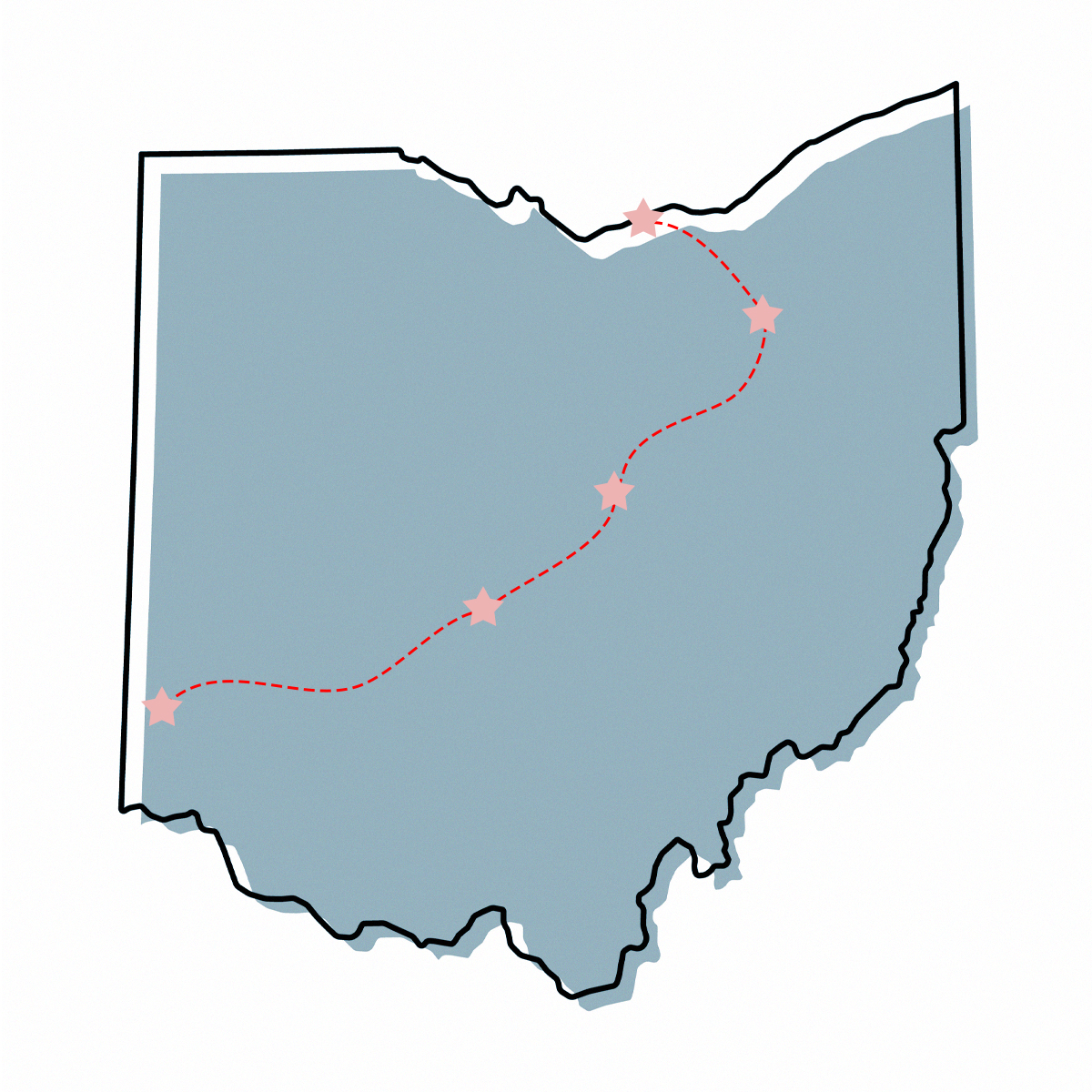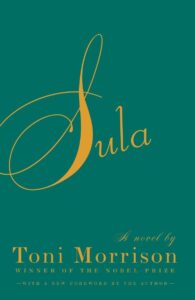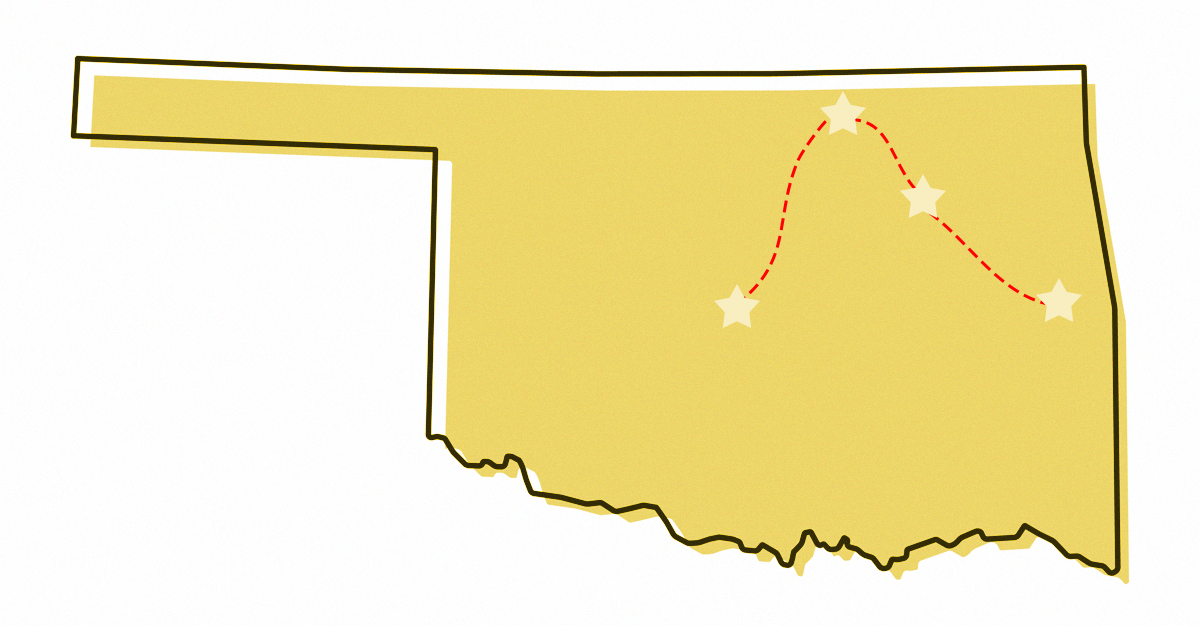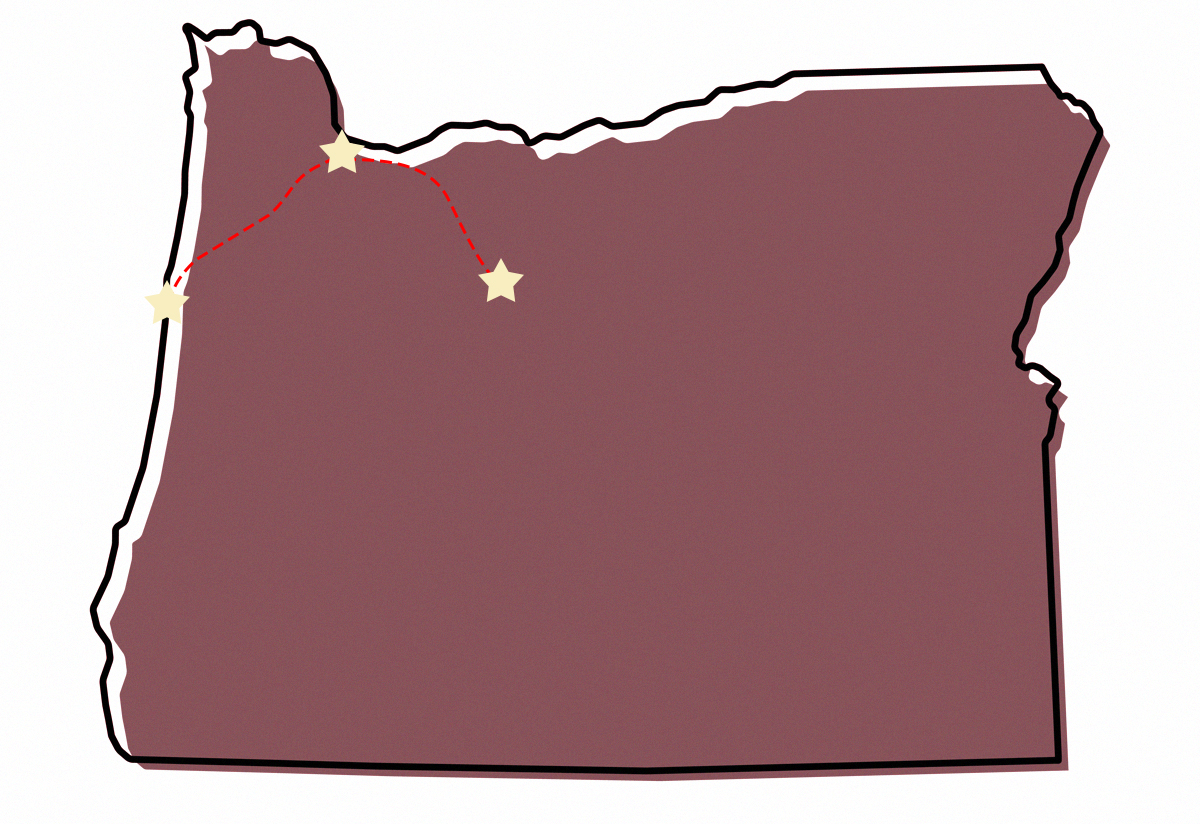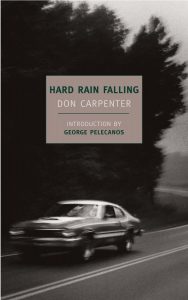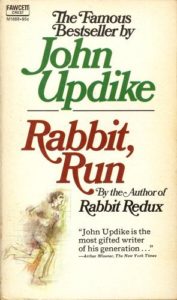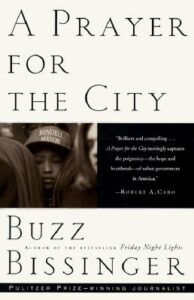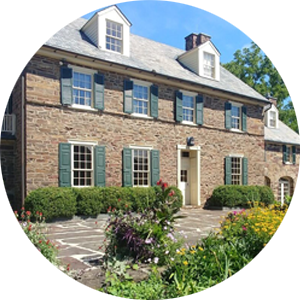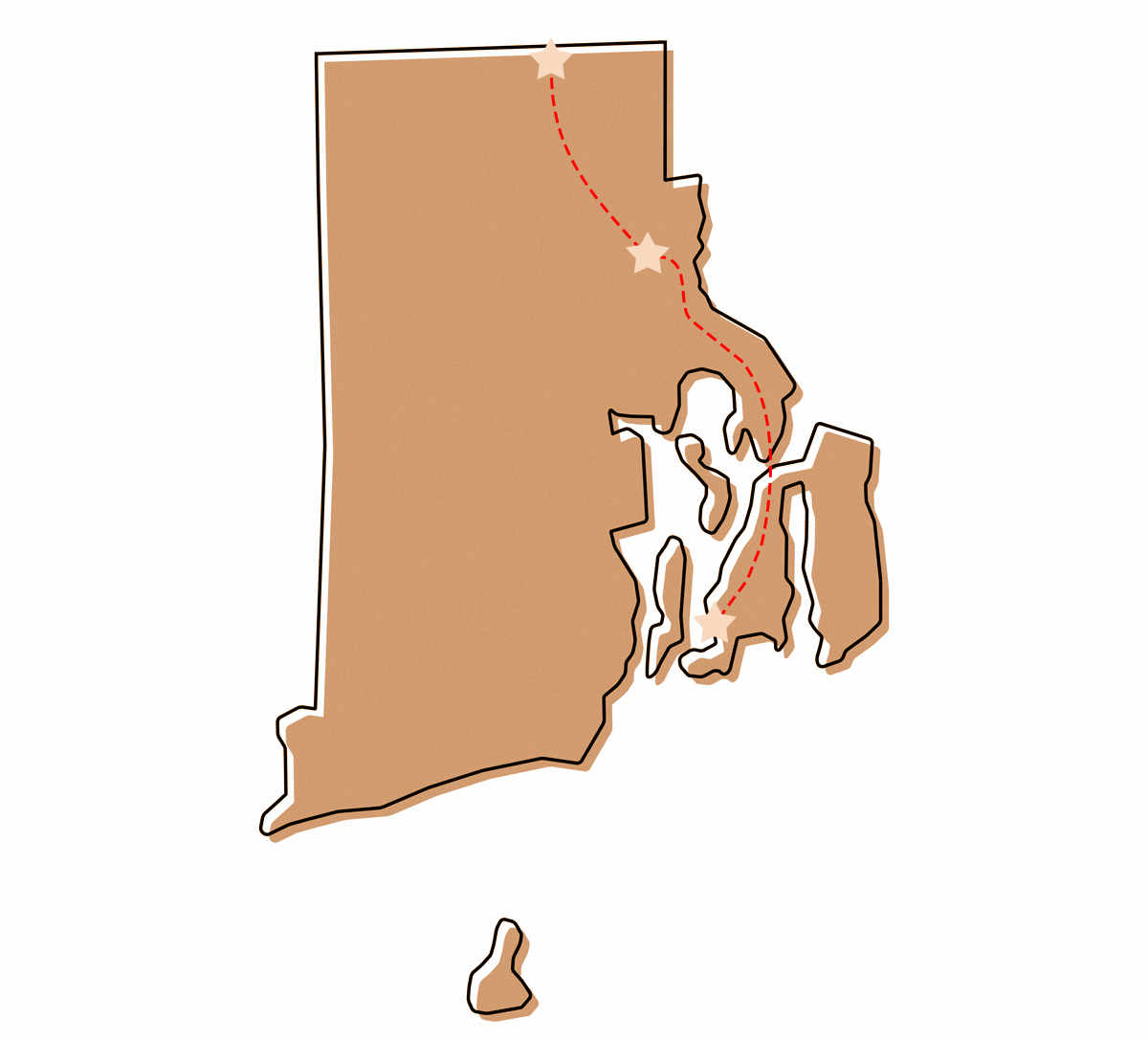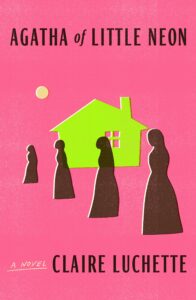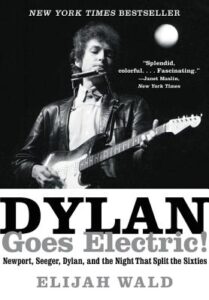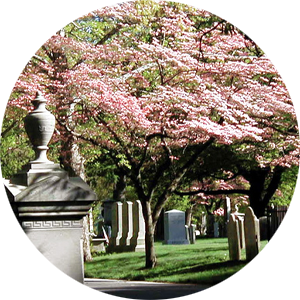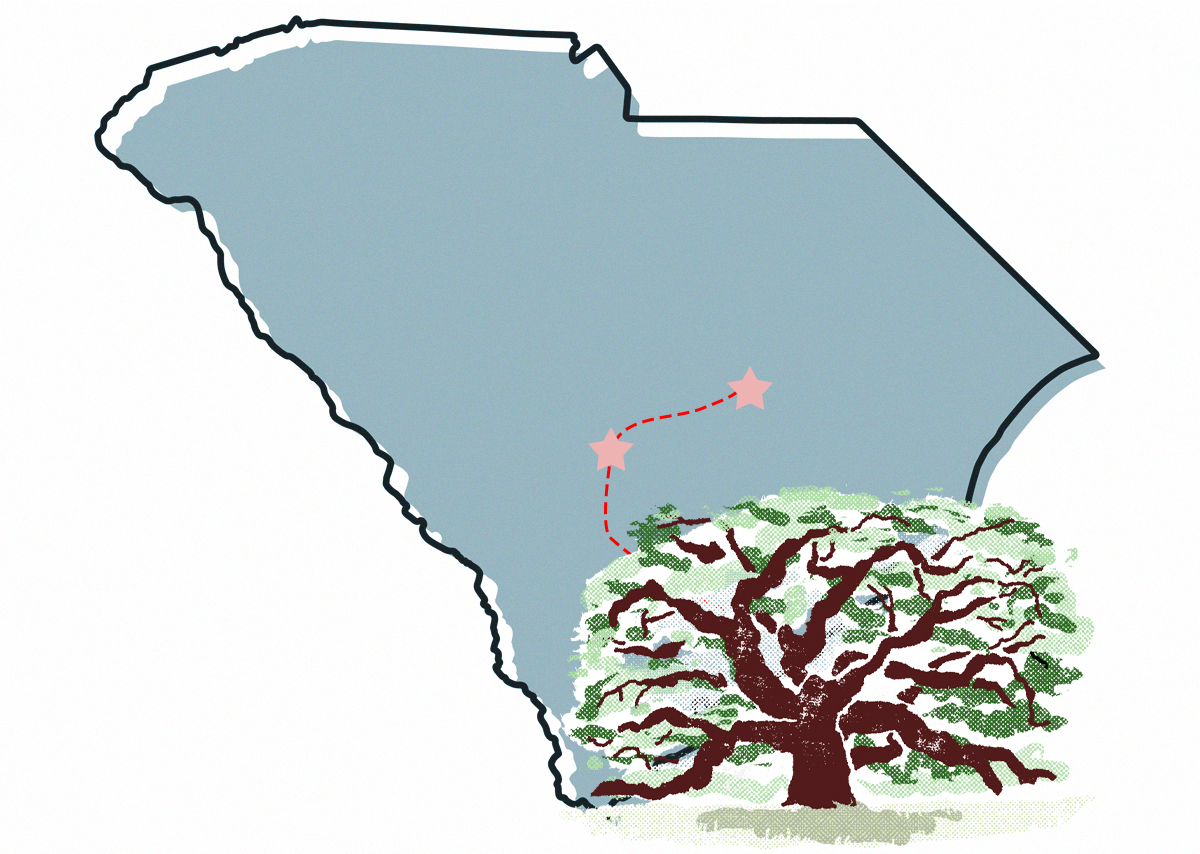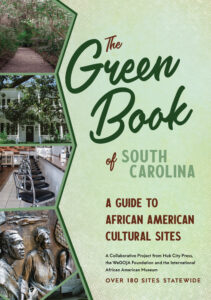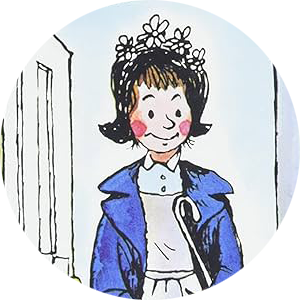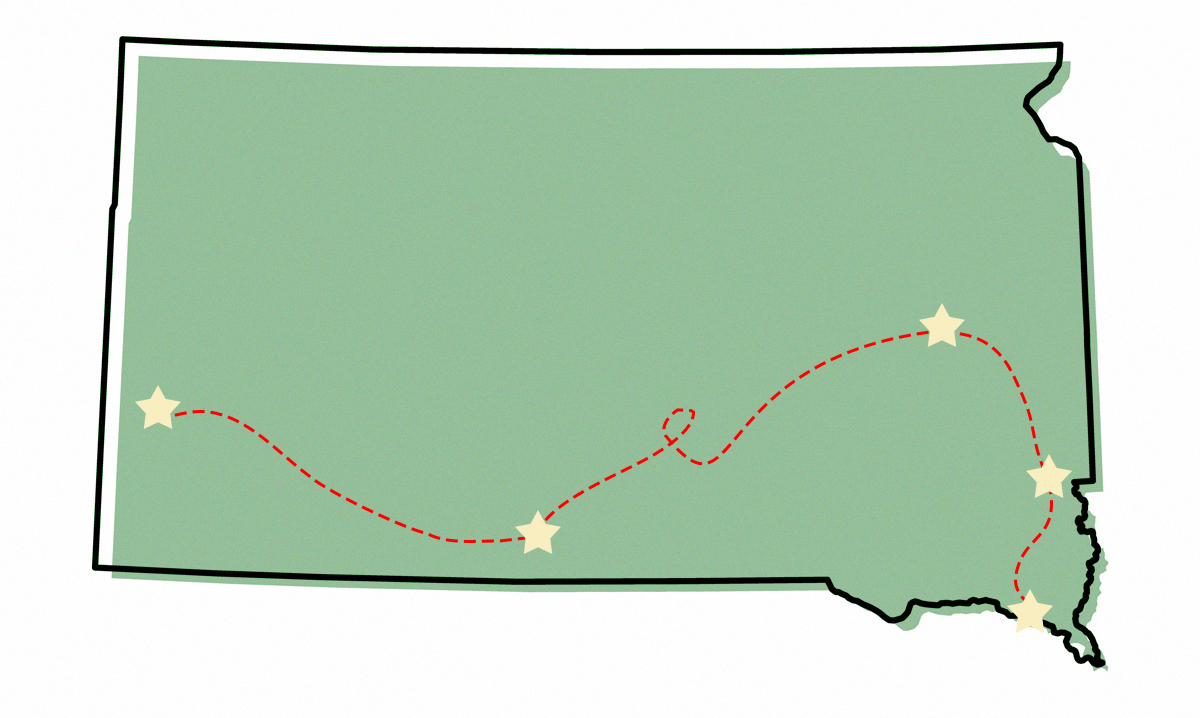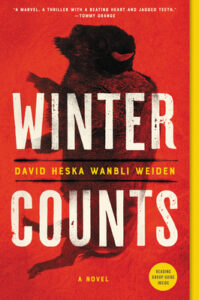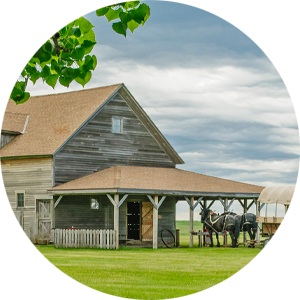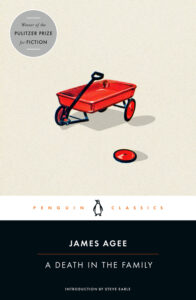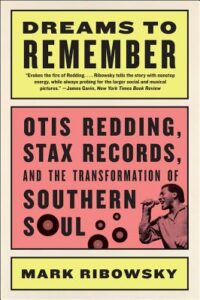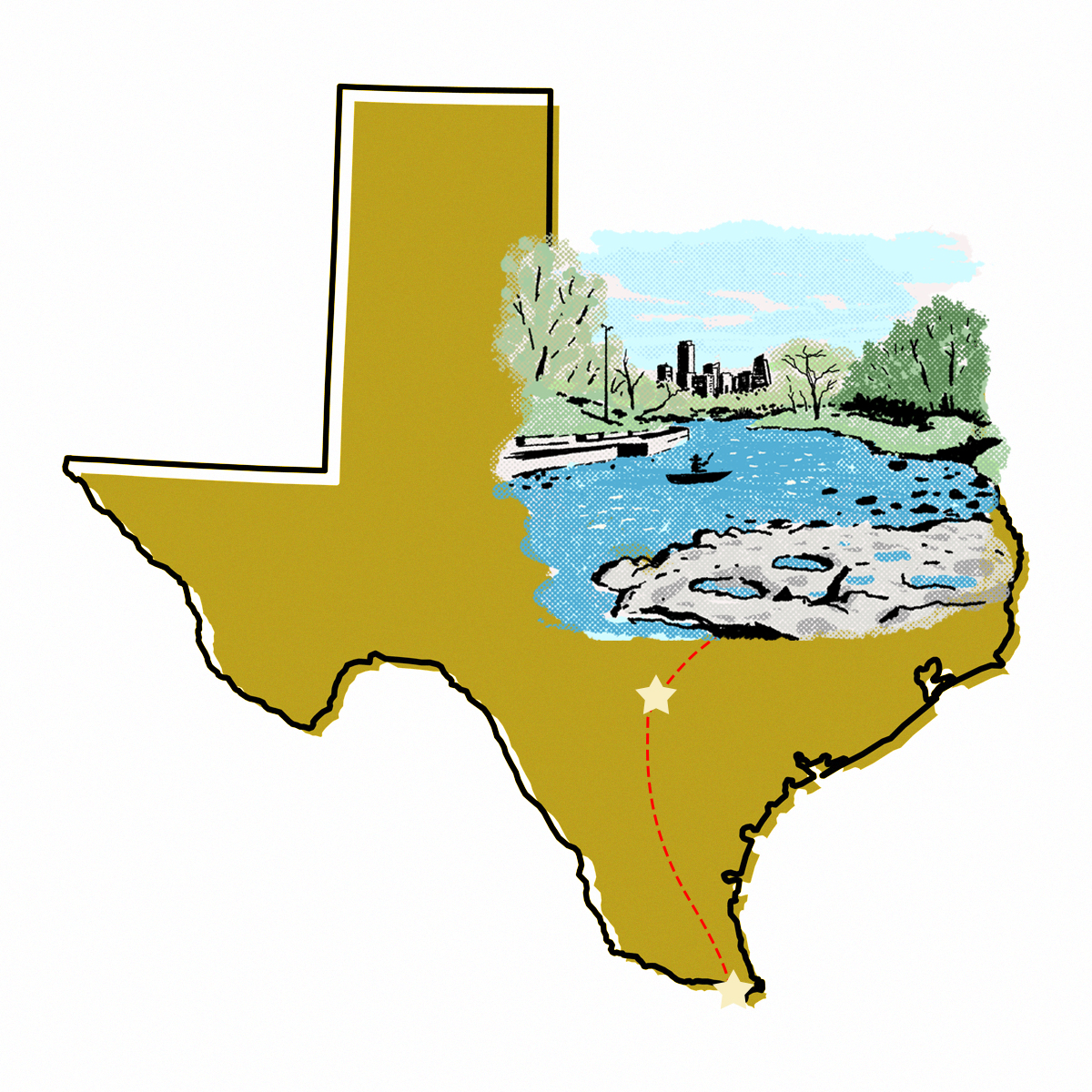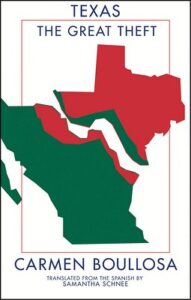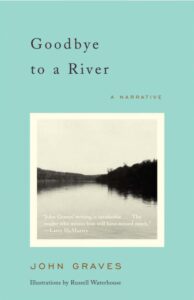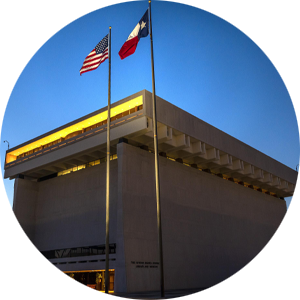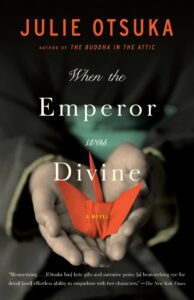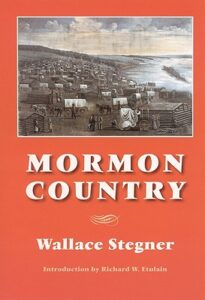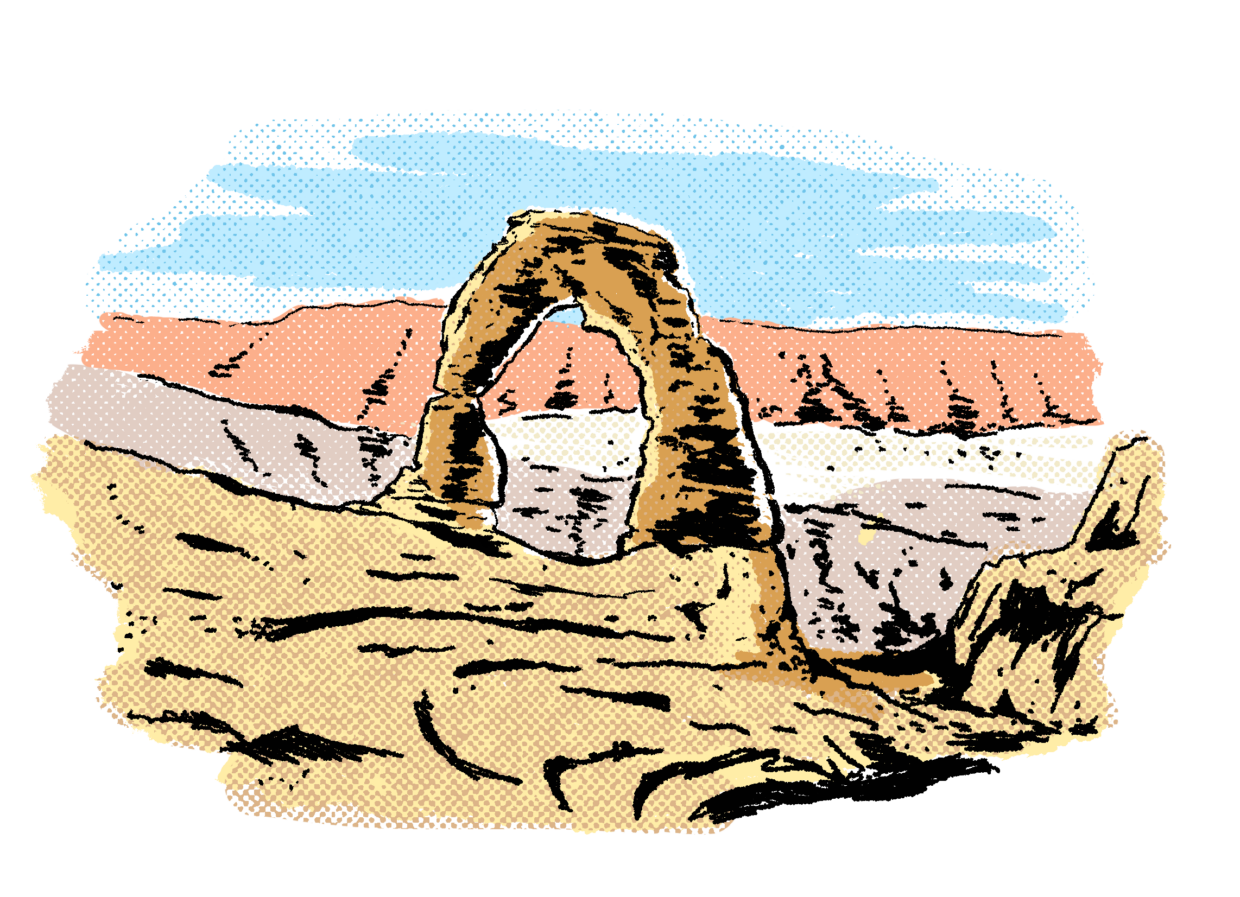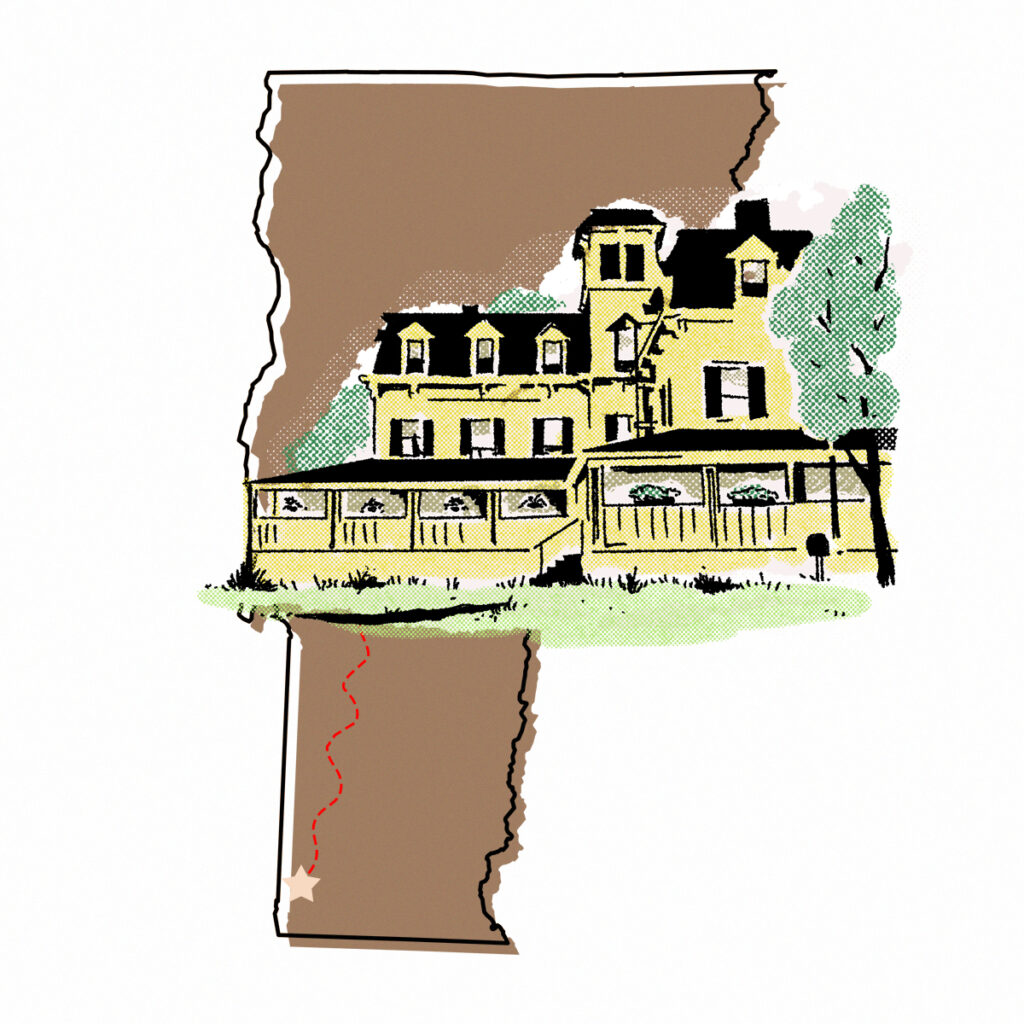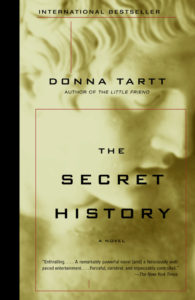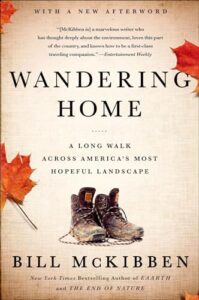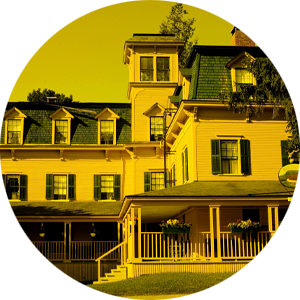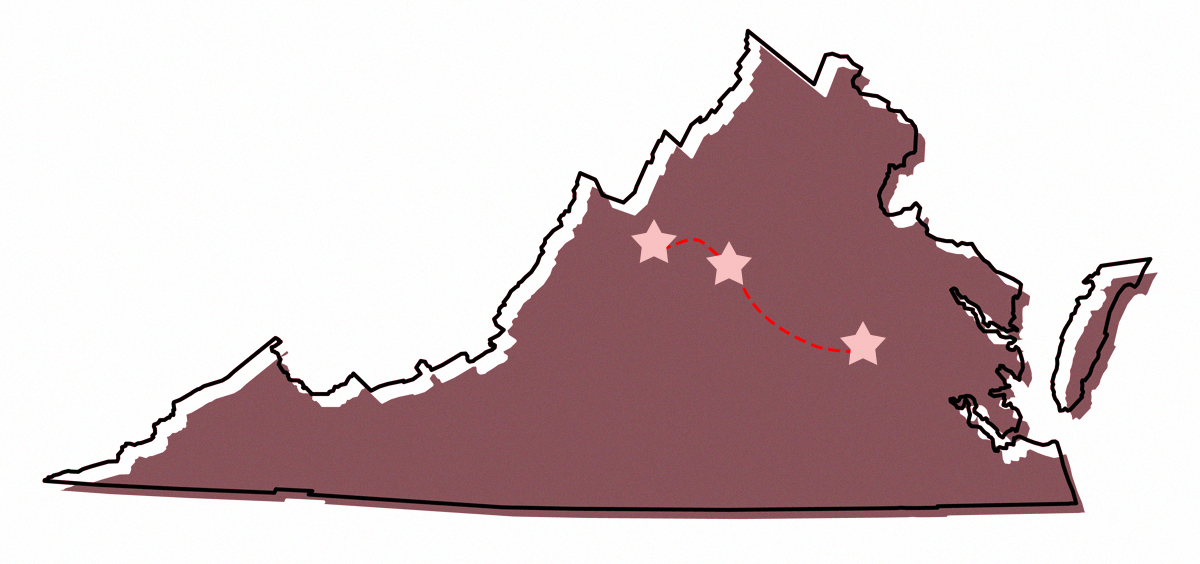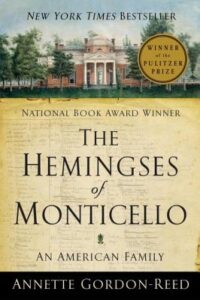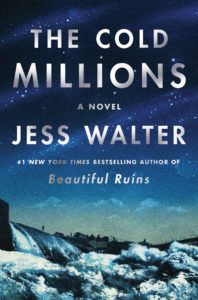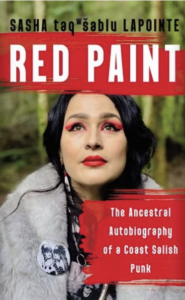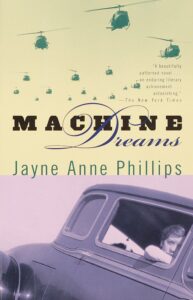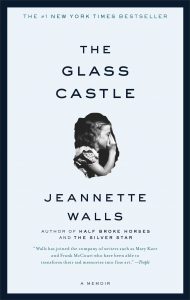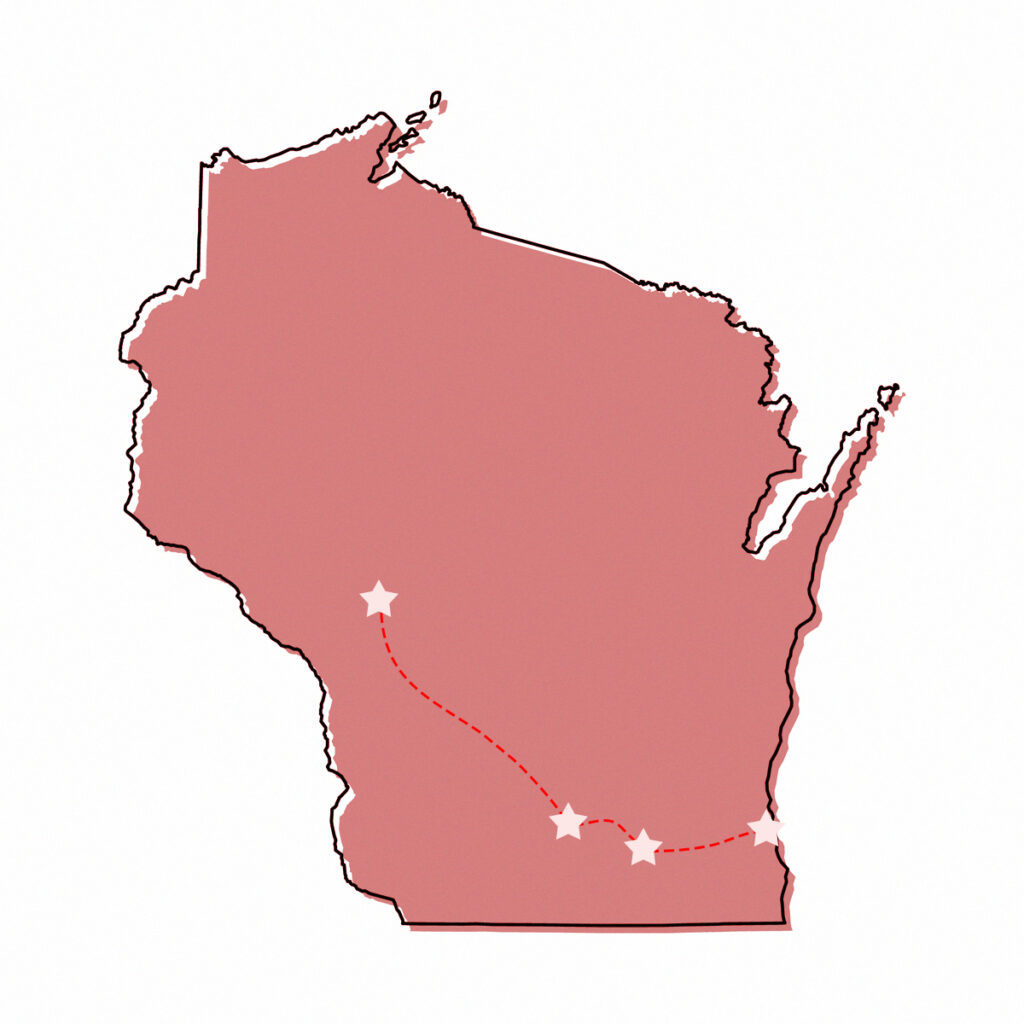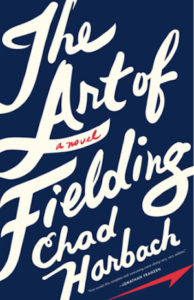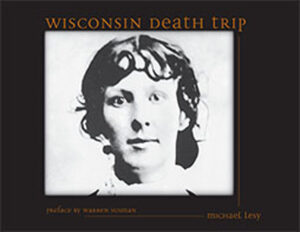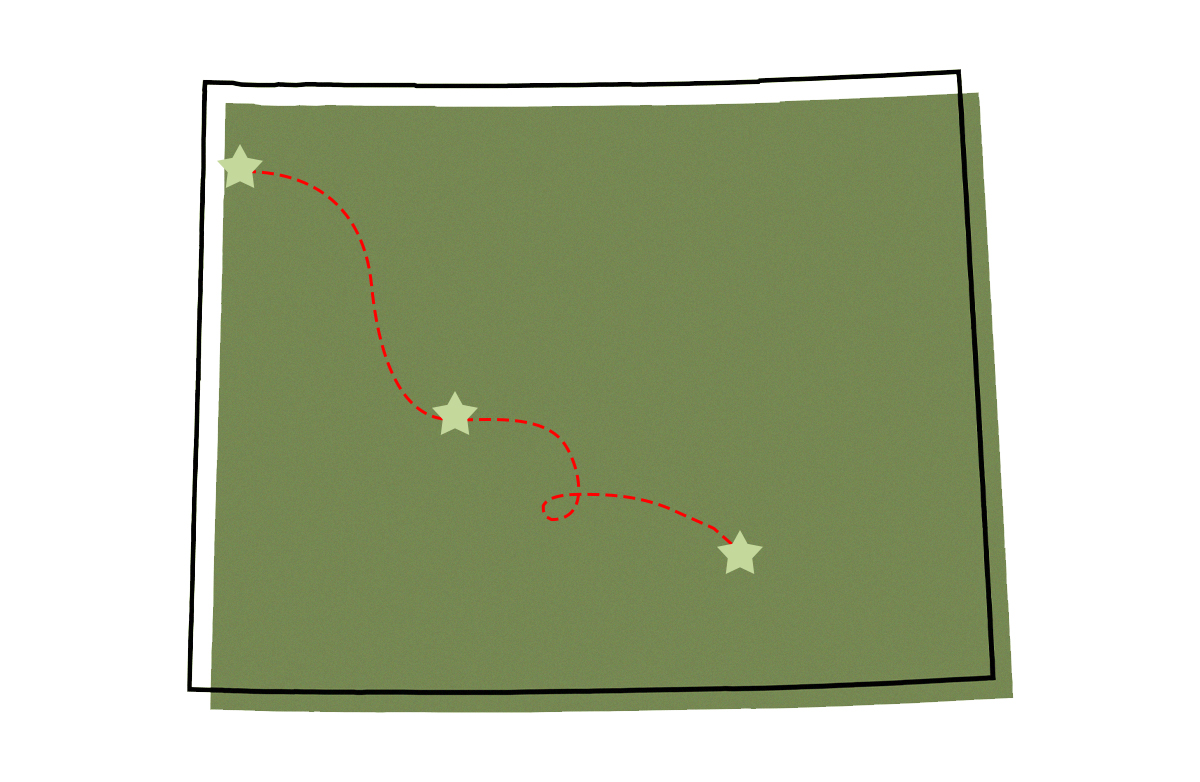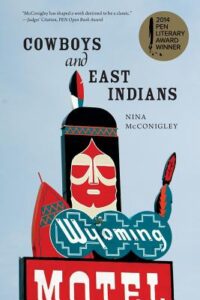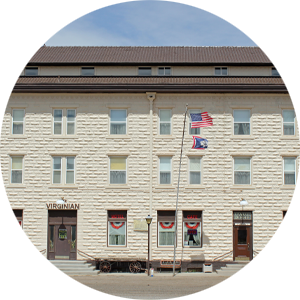Literary Hub and Wildsam present: a literary road trip across America. Happy travels!
Article continues after advertisement
Illustrations by Mike McKeogh
Alabama • Alaska • Arizona • Arkansas • California • Colorado • Connecticut • Delaware • District of Columbia • Florida • Georgia • Hawaii • Idaho • Illinois • Indiana • Iowa • Kansas • Kentucky • Louisiana • Maine • Maryland • Massachusetts • Michigan • Minnesota • Mississippi • Missouri • Montana • Nebraska • Nevada • New Hampshire • New Jersey • New Mexico • New York • North Carolina • North Dakota • Ohio • Oklahoma • Oregon • Pennsylvania • Rhode Island • South Carolina • South Dakota • Tennessee • Texas • Utah • Vermont • Virginia • Washington • West Virginia • Wisconsin • Wyoming
Visit the state’s oldest independent bookstore to find something new to fill up your brain—and then head a few blocks south to Johnny’s Restaurant, where you can fill up your belly (with fried green tomatoes). [MAP]
What to Read There:
Transcendent Kingdom
by Yaa Gyasi
Gifty and her family leave Ghana for Huntsville in this novel drawn from Gyasi’s life as the daughter of immigrants. [MAP]
Salvation on Sand Mountain
by Dennis Covington
A National Book Award finalist, Covington’s book covers the trial of Glenn Summerford and a snake handling church in Appalachia with generous curiosity. [MAP]
Jones is Alabama’s current poet laureate; her 2021 collection REPARATIONS NOW! was longlisted for the PEN / Voelker Award.
Literary Landmark:
Find your way to Nelle Harper Lee’s gravesite in Monroeville and leave a penny as tribute. [MAP]
The archives, stacks, and reading rooms here don’t skimp on majesty, and the design of the library itself—perched waterside and flanked by Thunder, Jumbo, Juneau, Roberts, and McGinnis peaks—is evocative of a bird poised for flight. [MAP]
What to Read There:
Julie of the Wolves
by Jean Craighead George
This tale of an Inuit girl and her adoptive wolf pack is an adventure classic. [MAP] See also: The Yiddish Policeman’s Union by Michael Chabon
Coming into the Country
by John McPhee
A master observer of place and people, McPhee’s travels through Alaska introduce readers to prospectors, politicians, and the bush community of Eagle. [MAP]
The Tlingit poet and former state laureate’s “The Spoken Forest” is installed at Totem Bight State Park in Ketchikan. [MAP]
Literary Landmark:
Jack London fans will find echoes of The Call of the Wild in Skagway, Alaska, where much of Buck’s story unfolds. [MAP]
Find 98 acres of botanical garden for walks and many desert landscape reading spots among sky-high saguaros. [MAP]
What to Read There:
Animal Dreams
by Barbara Kingsolver
Cosima “Codi” Noline returns to her rural Arizona home in Kingsolver’s 1990 novel, a meditation on grief, family, and homecoming. [MAP]
The Death and Life of Aida Hernandez: A Border Story
by Aaron Bobrow-Strain
What happens when an undocumented teen mother takes on the U.S. immigration system? This book is a harrowing deep-dive into the cost of the American dream. [MAP]
A recipient of the MacArthur “Genius” Grant whose latest collection, Postcolonial Love Poem, won the 2021 Pulitzer Prize for poetry, Diaz teaches at Arizona State University, and has directed a Mojave language revitalization project at Fort Mohave. [MAP]
Poet Steve Orlen called the Helen S. Schaefer Building—home base of The Poetry Center at University of Arizona—”the best living room in America for reading poetry.” [MAP]
Moshe Safdie designed this stunning structure in harmony with surrounding mountain landscape; you can find a rare Frank Lloyd Wright Usonian house here, too. [MAP]
What to Read There:
True Grit
by Charles Portis
Mattie Ross is 14 when she sets out across western Arkansas seeking justice for the murder of her father; adventure ensues! [MAP]
Hipbillies: Deep Revolution in the Arkansas Ozarks
by Jared M. Phillips
This archival deep-dive of Ozark beatniks is a departure from more common tales of the counterculture. [MAP]
In 1926, Marinoni created the University-City Poetry Club; for forty-five years, the club met at her home near the UA campus. In 1953, she was named poet laureate of Arkansas. [MAP]
Literary Landmark: Johnswood
John Gould Fletcher and Charlie May Simon lived here, writing from opposite sides of the house. [MAP]
Spot to Read: Nepenthe, Big Sur
Named for the sorrow-dispelling drug in Homer’s Odyssey, this perch is known for its dramatic Pacific views (and vibes); literary legends haunt these parts. If you need a change of scenery, the Henry Miller Memorial Library is right down the road. [MAP]
What to Read There:
Mecca
by Susan Straight
There is no glitz and no glamour in Straight’s recent novel, which makes it all the more essential as a California epic. [MAP] See also: The Sympathizer by Viet Thanh Nguyen; Farewell, My Lovely by Raymond Chandler
Slouching Towards Bethlehem
by Joan Didion
Possibly the most iconic California book (and California writer) of all time. [MAP] See also: Eve’s Hollywood by Eve Babitz
Uyematsu’s 30 Miles from J-Town won the Nicholas Roerich Poetry Prize in 1992. [MAP]
One of the largest literary museums in the country dedicated to a single author. [MAP]
An ongoing labor of love: this residential library is the result of a transformation of an abandoned ranch, celebrating nature and history. [MAP]
What to Read There:
Plainsong
by Kent Haruf
This spare, gorgeous novel is set in the High Plains, in the fictional town of Holt. [MAP]
Deep Creek
by Pam Houston
In these poignant essays, Houston revels in the Rockies’ beauty and chronicles the ways in which her 120-acre ranch high in the San Juan Mountains has healed and inspired her. [MAP]
The author of Trophic Cascade and distinguished professor at Colorado State University, Dungy released a new book of prose—Soil: The Story of a Black Mother’s Garden—in 2023. [MAP]
The inspiration for The Shining came from a nightmare Stephen King had here, in room 217. [MAP]
(Or Spend a Literary Long Weekend in Denver)
A cathedral of 180,000 volumes (and thousands of linear feet) plus jaw-dropping permanent collections, all accessible for free—heaven for bibliophiles. [MAP]
What to Read There:
Revolutionary Road
by Richard Yates
Trouble brews in a suburban idyll when conventions are questioned and tested. [MAP] See also: On Earth We’re Briefly Gorgeous by Ocean Vuong; Ninth House by Leigh Bardugo
Yale Needs Women
by Anne Gardiner Perkins
In 1969, five women broke the gender barrier at Yale for the first time; this Connecticut Book Award-winning account follows them through the school’s early years of coeducation. [MAP]
Brim-Bell, Connecticut’s 8th Poet Laureate, is the author of three collections: These Women You Gave Me, Icarus in Love and Psalm of the Sunflower. [MAP]
Trace the 2.4 mile commute that Stevens made daily, from the house where his modernist verse was composed to his office at The Hartford. [MAP]
(Or Spend a Literary Long Weekend in Hartford)
This independent bookshop, set a few steps off the Bethany Beach boardwalk, is open year-round—but in the summer, you can walk straight out of the store and onto the sand, beach read in hand. (The question of what exactly constitutes a beach read is, as ever, one we must all answer for ourselves.) [MAP]
What to Read There:
The Book of Unknown Americans
by Cristina Henríquez
A star-crossed love story—as well as a choral portrait of the Latino immigrant experience in America—about a Mexican family who move to a Delaware apartment building. [MAP] See also: Fight Club by Chuck Palahniuk
Debt: The First 5,000 Years
by David Graeber
The American anthropologist and left-wing thinker’s seminal work of economic anthropology is essential reading in the land where pretty much all American credit cards are based. [MAP]
The author of Violets and Other Tales and Masterpieces of Negro Eloquence made Wilmington her home. [MAP]
In this 175-room house, you’ll find a host of rarities, from 17th-century atlases and European style guides to chromolithographed ephemera. [MAP]
This bright and bustling neighborhood hub manages to be bar, bookstore, brunch spot and coffeeshop, all rolled into one. [MAP]
What to Read There:
Cane
by Jean Toomer
A classic series of modernist vignettes that evoke Black life in urban and rural settings in the American South. [MAP] See also: Heartburn by Nora Ephron; Lost in the City by Edward P. Jones
Banned in D.C.
by Cynthia Connolly
A uniquely vivid, messy, and sweaty photographic document of D.C.’s vibrant early ’80s punk underground, which remains a potent force shaping the city’s culture. [MAP]
Beasley’s propulsive and visceral work often takes on national landmarks—from a bracing outsider’s perspective. [MAP]
This soaring, cooly lit vault of national treasures is at the very heart of American letters. [MAP]
(Or Spend a Literary Long Weekend there)
Spot to Read: Florida Keys National Marine Sanctuary, Miami to Dry Tortugas
Nearly 3,000 square nautical miles of coastal and ocean ecosystem teeming with fish, coral, and birds. Protected, but free. [MAP]
What to Read There:
Florida
by Lauren Groff
Nature means menace in this lush collection of short stories from three-time National Book Award finalist Groff, who lives and teaches in Gainesville. [MAP] See also: The Nickel Boys by Colson Whitehead.
The Orchid Thief
by Susan Orlean
Orlean’s investigation of the 1994 arrest of horticulturist John Laroche and a group of Seminoles in south Florida for poaching rare orchids also served as the (very meta) inspiration for the film Adaptation. [MAP]
Poems, Prose and Letters includes poetry from the Pulitzer Prize and National Book Award winner’s time in the Keys. Start with “Roosters.” [MAP]
Literary Landmark: Zora Neale Hurston House, Fort Pierce
Hurston’s childhood was spent in Eatonville, one of the first all-Black towns incorporated in the United States. But the last remaining residence associated with the beloved author is this one, in nearby Fort Pierce, where she lived toward the end of her life. [MAP]
Reading spots abound on the 39 verdant acres of this historically Black college, where luminaries like Alice Walker and Martin Luther King Jr. once crossed paths. [MAP]
What to Read There:
The Heart is a Lonely Hunter
by Carson McCullers
A rich, humane exploration of spiritual isolation in a rural Georgia mill town. See also: An American Marriage by Tayari Jones.
The Devil You Know
by Charles Blow
This journalist’s manifesto is also a call to action, asking Black Americans to migrate back south. [MAP]
The author of Still Life with Mother and Knife also implemented the Georgia Poetry in the Parks project. [MAP]
The iconic spinner of Southern Gothic stories grew up in this house, where she famously kept a chicken who walked backwards. [MAP]
(Or Spend a Literary Long Weekend in Atlanta)
One of only five National Tropical Botanical Gardens in the U.S.; the Canoe Garden features plants brought over by the region’s original Polynesian inhabitants. [MAP]
What to Read There:
This Is Paradise
by Kristiana Kahakauwila
A collection of raw, vivid stories that invert traditional conceptions of paradise. [MAP] See also: Sharks in the Time of Saviors by Kawai Strong Washburn
Hawai‘i’s Story by Hawai‘i’s Queen
by Queen Lili’uokalani
A stirring account—first published in 1898, five years after the overthrow of the Kingdom—written by the islands’ last monarch. [MAP]
Before his death, the former U.S. Poet Laureate, who was dedicated to the restoration of Maui’s rainforests, restored an old pineapple plantation to its original state. [MAP]
The westernmost bookstore in the U.S. has more than 150,000 titles on offer, including essential Kaua‘i reads. [MAP]
Take a walk along Trail Creek and stop to rest and read for a while by the Hemingway Memorial, a simple column among the trees. For the slightly more morbid, his gravesite is also nearby, in Ketchum Cemetery. [MAP]
What to Read There:
Housekeeping
by Marilynne Robinson
Fingerbone, Idaho is a living, breathing character in this novel, from Pulitzer Prize winner Robinson, about three generations of women and the homes they make—both material and interior. [MAP] See also: Train Dreams by Denis Johnson
Educated
by Tara Westover
In this memoir, Westover, born to survivalist Mormon parents in Clifton, shares her harrowing experience of education in the rural Idaho of her childhood, and her journey beyond the confines of her family. [MAP]
The state’s current Writer in Residence creates poetry inspired by landscape and wilderness and rooted in her Indigenous experience. [MAP]
Sun Valley Center for the Arts is the steward of famed modernist poet Ezra Pound’s birthplace. [MAP]
Spot to Read: Ray Bradbury Park, Waukegan
This lovely little park, dedicated to the Waukegan native and science fiction legend, is a good spot to spend an uninterrupted hour traveling the universe via book. [MAP]
What to Read There:
The Great Believers
by Rebecca Makkai
The AIDS crisis infiltrates and upends a community of friends in 1980s Chicago in this multi-generational novel. [MAP] See also: The Adventures of Augie March by Saul Bellow
The Warmth of Other Suns
by Isabel Wilkerson
Wilkerson interviewed more than a thousand people in the crafting of this masterwork about the migration of Black Americans to northern and western cities. [MAP] See also: The Devil in the White City by Erik Larson
The decorated Chicago-born poet is the author of eight collections and is the four-time individual champion of the National Poetry Slam. [MAP]
Wright’s seminal 1940 novel Native Son was written in this four-room Bronzeville apartment. [MAP]
(Or Spend a Literary Long Weekend in Chicago)
Inspiration should be easy to find in this lush expanse of shifting sand dunes, wetlands, oak savannahs and 15,000 acres of plant and bird variety. [MAP]
What to Read There:
An American Tragedy
by Theodore Dreiser
A Terre Haute native, Dreiser published this novel—a study of a notorious murder case, and a resounding indictment of American society—in 1925. [MAP]
The Book of Delights
by Ross Gay
An exploration of daily joys and wonder from an Indiana University professor and beloved lyricist. [MAP]
McSweeney’s Toxicon and Arachne, a volume of two books on disaster and the catastrophic, is brilliant and unsettling. [MAP]
Literary Landmark: South Bend
The fictional town of Vacca Vale, IN, where Tess Gunty’s National Book Award-winning The Rabbit Hutch is set, is based on South Bend, where Gunty grew up. [MAP]
Spot to Read: Art Building West, Iowa City
The shining edifice of this University of Iowa building is a sight to behold—and is surrounded by plenty of good reading spots. [MAP]
What to Read There:
A Thousand Acres
by Jane Smiley
Smiley’s beloved, Pulitzer Prize-winning novel transplants the intergenerational drama of Shakespeare’s King Lear onto an Iowan farm.
The Life and Times of the Thunderbolt Kid
by Bill Bryson
Bryson, best known for A Walk in the Woods, was born in Des Moines in 1951; this memoir is an often-hilarious and thoroughly nostalgic account of his childhood. [MAP]
Powell wrote the bulk of his first collection, Tea, while he was a grad student at Iowa; the landscape permeates its pages. [MAP]
Literary Landmark: Prairie Lights, Iowa City
A beloved bookstore—and showcase for buzzy writers—in a designated UNESCO World City of Literature. [MAP]
In 2019, owner Danny Caine compiled a zine called “How to Resist Amazon and Why,” which has become a rallying cry for readers and independent bookstores alike. [MAP]
What to Read There:
In Cold Blood
by Truman Capote
This “nonfiction novel,” first published as a four-part series in The New Yorker, recounts the 1959 murders of the Clutter family in Holcomb, a farming community in southwest Kansas. [MAP] See also: Mrs. Bridge by Evan S. Connell
Heartland
by Sarah Smarsh
A memoir that doubles as a cultural examination of socioeconomic disparities in America, written by a fifth-generation Kansan. [MAP]
The prolific poet of the Great Plains won a National Book Award for Traveling through the Dark in 1963. [MAP]
Literary Landmark: 732 Alabama Street, Lawrence
Langston Hughes lived here as a child with his maternal grandmother. The house was demolished in the ’60s, but a nearly identical one still sits next door. [MAP]
Spot to Read: Central Library, Lexington
The world’s largest ceiling clock—complete with a five-story Foucault’s Pendulum—is housed within this library’s rotunda. [MAP]
What to Read There:
A Place on Earth
by Wendell Berry
The 89-year-old writer-poet-activist lives and writes on a working farm in Henry County, from which he’s spun out many enduring, interwoven tales of the people in the fictional small town of Port William (inspired by his own hometown of Port Royal). [MAP]
Blood Horses: Notes of a Sportswriter’s Son
by John Jeremiah Sullivan
In Sullivan’s first book, he combines reflections on his relationship with his late father with an in-depth history of American horseracing. [MAP]
In Perfect Black, Kentucky’s poet laureate explores her intersecting identities as a Black woman born in Appalachia. [MAP]
Literary Landmark: bell hooks mural, Hopkinsville
This hometown mural honors a woman deeply rooted in and shaped by the Western Kentucky landscape. [MAP]
Spot to Read: City Park, New Orleans
This park, dotted by 600-year-old live oaks and bordered by bayous, covers 1,300 acres. [MAP]
What to Read There:
The Moviegoer
by Walker Percy
A young New Orleans stockbroker searches for meaning beyond artifice through a Mardi Gras quest; the result is an American masterpiece. [MAP] See also: Salvage the Bones by Jesmyn Ward
The Yellow House
by Sarah M. Broom
Broom melds memoir with sweeping historical narrative as she writes about her family history and childhood home as well as the vast racial inequities in the city of New Orleans. [MAP] See also: Five Days at Memorial, by Sheri Fink
Start with the Shreveport-born poet’s Pulitzer Prize-winning The Tradition, a lyrical collection about violence, identity, and legacy. [MAP]
Literary Landmark: Faulkner House Books
At 624 Pirate’s Alley in the French Quarter, you’ll find this jewel-box bookseller tucked into the house where Faulkner lived and wrote his first novel, Soldier’s Pay. [MAP]
(Or Spend a Literary Long Weekend in New Orleans)
Come for the cocktails and coffee roasted on-site, stay for the robust schedule of literary events. If you didn’t bring a book with you, no problem—you can find one on the shelves here (and bring it home with you when you’re ready to leave). [MAP]
What to Read There:
Olive Kitteridge
by Elizabeth Strout
A beloved novel in stories that explores the quiet, mysterious undertow of life in the coastal town of Crosby, Maine (fictional, but rumored to be based on Brunswick). [MAP] See also: Night of the Living Rez by Morgan Talty
Always, Rachel: The Letters of Rachel Carson and Dorothy Freeman, 1952-1964
ed. Martha Freeman
Impassioned correspondence between the great environmental writer and her close companion; the coast’s sublimity features often. [MAP]
Best known for prose awash in Maine’s landscape and tradition, her poetry, too, presents a vivid portrait of life in its seaport towns.
Literary Landmark: Stephen King House, Bangor
The author’s Bangor Victorian sits behind a wrought-iron fence adorned with spiders and bats, and acts as an archive for writers, by appointment only. [MAP]
(Or Spend a Literary Long Weekend in Portland)
An astonishing library with serpentine stairways that guide you to its centerpiece: the soaring stack room complete with tiered balconies. [MAP]
What to Read There:
Dinner at the Homesick Restaurant
by Anne Tyler
The domestic intimacies of the Tull family unfurl in Tyler’s ninth novel. In his review for The New Yorker, John Updike wrote that Tyler had “arrived at a new level of power.” [MAP] See also: Kindred by Octavia Butler
Between the World and Me
by Ta-Nehisi Coates
In a letter to his son, Coates weaves stories of his life—beginning with his childhood at North Collington Avenue in West Baltimore—into an expansive American narrative. [MAP]
Clifton’s work was first spotted by Langston Hughes, who published it in his 1970 anthology The Poetry of the Negro. In 1987, she became the first author to have two of her poetry books selected as finalists for the Pulitzer Prize.
A life-size raven greets visitors at the home of this master of the macabre. [MAP]
The immersive art museum’s New Wing joins the glass-walled interior with the Monk’s, Jordan, and Lynch gardens—a special landscape for cracking open a book. [MAP]
What to Read There:
Little Women
by Louisa May Alcott
The March women of Concord’s Orchard House have served as inspiration for generation upon generation of writers. [MAP] See also: On Beauty by Zadie Smith, The Bell Jar by Sylvia Plath
The Witches: Suspicion, Betrayal, and Hysteria in 1692 Salem
by Stacy Schiff
Schiff’s thrilling, meticulously researched account of the Salem witch trials will have you looking over your shoulder everywhere you go—and appreciating modern Salem all the more. [MAP]
With wisdom, humor, and attention to every precious detail, Oliver’s A Thousand Mornings brings the reader along to the shore, ponds, and marshes surrounding the poet’s Provincetown home. [MAP]
Literary Landmark: The Mount, Lenox
Edith Wharton’s sweeping estate in the Berkshires, which she designed herself, now functions as a house museum and cultural center. Don’t miss the pet cemetery. [MAP]
(Or Spend a Literary Long Weekend in Boston)
Spot to Read: Tahquamenon Falls State Park, Upper Peninsula
Row out to this park’s island encircled by five lower falls. Four miles upstream, the dramatic Upper Falls cascades nearly 50 feet down, across 200 feet. [MAP]
What to Read There:
The Nick Adams Stories
by Ernest Hemingway
These coming-of-age short stories were inspired by Hemingway’s summers at his family’s Northern Michigan cottage. [MAP] See also: The Jeffrey Eugenides oeuvre.
Black Detroit
by Herb Boyd
Part memoir, part cultural history, Boyd’s illuminating take on Detroit explores the changemakers and freedom fighters who shaped (and continue to shape) the iconic city. [MAP]
Poet of Note: Lois Beardslee
This Ojibwe poet’s collection Words Like Thunder was the first book by an Indigenous author to win the Michigan Notable Book Award. [MAP]
Literary Landmark: Idlewild
What began as a resort became a haunt for black intellectuals: Charles Waddell Chesnutt, W.E.B. DuBois, Langston Hughes, and Zora Neale Hurston rubbed shoulders here. [MAP]
The iconic lighthouse—which for a little extra literary flair, made an appearance in Baz Luhrman’s adaptation of The Great Gatsby—sits on a cliff 130 feet above Lake Superior, and is surrounded by a state park. Picturesque reading spots abound—if you can tear your eyes away from the view. [MAP]
What to Read There:
The Sentence
by Louise Erdrich
Erdrich’s (fictional) ghost story features the author’s real-life Minneapolis bookstore at its center. [MAP] See also: History of Wolves by Emily Fridlund
All Our Relations
by Winona LaDuke
A formative work of Native resistance to oppression, written by an Anishinaabe environmental leader. [MAP]
The state’s poet laureate grew up on a farm in St. Joseph and won the Minnesota Book Award for First Words. [MAP]
Papermaking, letterpress printing, and bookbinding all celebrate the book as an art form. Explore them here. [MAP]
Spot to Read: Rowan Oak, Oxford
Tour the house for inspiration, then find a spot among Faulkner’s gardens to read a while. [MAP]
What to Read There:
Salvage the Bones
by Jesmyn Ward
Esch Batiste and her family prepare for Hurricane Katrina in fictional Bois Sauvage, Mississippi, in this National Book Award-winning novel from Ward, who also experienced Katrina. [MAP]
Heavy
by Kiese Laymon
Laymon’s powerful memoir about growing up as a Black man in Jackson, Mississippi reckons with harm in both public and private life. [MAP]
Born in Gulfport, Mississippi, to parents whose pre-Loving v. Virginia marriage was illegal at the time of her birth, Trethewey served two terms as the Poet Laureate of the United States (2012-2014) and won the 2007 Pulitzer Prize in Poetry for her collection Native Guard. [MAP]
Literary Landmark: Eudora Welty Gravesite, Jackson
In Greenwood Cemetery, you’ll find the resting place of a brilliant voice of the American South. [MAP]
Spot to Read: Loose Park Rose Garden, Kansas City
A public horticultural respite brought to you by the Kansas City Rose Society. [MAP]
What to Read There:
Stoner
by John Williams
William Stoner converts from Missouri farm boy to scholar in this tale of academia, war, and love. [MAP]
Blue Highways
by William Least Heat-Moon
Take a vicarious three-month road trip around the United States via Ford Ecoline van, with this Boone County writer as your guide. [MAP]
Living and teaching in St. Louis, Phillips recently took home a Pulitzer for his collection Then the War: And Selected Poems. [MAP]
Literary Landmark: Maya Angelou’s Birthplace, St. Louis
The house at 3130 Hickory Street was just the beginning for the poet-essayist-activist legend. [MAP]
With its state-of-the-art design and breathtaking scenic views, it’s no surprise that this spot was declared the “World’s Best Public Library” of 2022 by the World Library and Information Congress in Dublin, Ireland—the first library from North America to win the prestigious award. [MAP]
What to Read There:
Perma Red
by Debra Magpie Earling
Debra Magpie Earling’s tale of a free-thinking woman on the 1940s Flathead Reservation holds stark present-day relevance. [MAP] See also: Fools Crow by James Welch
Brothers on Three
by Abe Streep
More than a sports story (but an exciting one at that), this Montana Book Award winner follows two starters from the Arlee Warriors high school basketball team, who live and play on the Flathead Indian Reservation. [MAP]
Poet of Note: Henry Real Bird
Crow Nation citizen, rancher, and former poet laureate, Henry Real Bird is known for traversing the state on horseback to craft an epic vision in verse. [MAP]
The archives, you say? How exciting. But really: this is one of the best local history troves in America, documenting a wild city of mining millionaires and immigrant strivers. [MAP]
Grab a spot in a cozy armchair—or relax on the eponymous terrace—after finding a new favorite in this independent bookstore in historic downtown Columbus. [MAP]
What to Read There:
My Ántonia
by Willa Cather
The stories of immigrant Ántonia Shimerda and Jim Burden coalesce in Black Hawk, a town based on the author’s native Red Cloud. [MAP]
Old Jules
by Mari Sandoz
Droughts, scarcity, and isolation are threaded through oral histories passed down from a pioneer father. [MAP]
His poetic ode to the state appropriately begins with “the gravel road rides with a slow gallop over the fields.” [MAP]
Calling all John Neihardt fans: Here’s a dedicated commemoration of Nebraska’s Poet Laureate (in perpetuity!), at the site of his former home. [MAP]
Low neon lighting and purple plush booths serve as the backdrop for this Reno lounge, which slings breakfast and cocktails any time—perfect for 3 a.m. or p.m.—and which was a longtime favorite of MacArthur-winning art critic and writer Dave Hickey. [MAP]
What to Read There:
Beautiful Children
by Charles Bock
The son of pawnbrokers tells an intersecting, neon-lit tale of Las Vegas. [MAP]
The Main Event
by Richard O. Davies
Before Nevada became synonymous with gambling, it earned its nickname the “Sin State” for its embrace of boxing.
Clark County poet laureate emerita writes with heart, rhythm, and hope. [MAP]
A dedicated hub for writers and literary activism, with special emphasis on lifting up underrepresented voices. Catch a reading while you’re in town. [MAP]
(Or Spend a Literary Long Weekend in Las Vegas)
Spot to Read: Diana’s Baths, North Conway
After a gentle hike into White Mountain National Forest, you’ll find a series of small waterfalls and wading pools, with many spots for lounging. Try not to get your book wet. [MAP]
What to Read There:
The World According to Garp
by John Irving
The author’s fifth novel and magnum opus tackles themes of feminism, sexuality, and literary ambition against the backdrop of a New Hampshire boarding school. [MAP]
Jane Kenyon: A Literary Life
by John H. Timmerman
This examination of the lyric poet’s life and work explores the construction of and inspiration behind her poetry as well as her lifelong struggle with manic depression. [MAP]
Ever heard of him? The Dartmouth alumnus and Pulitzer Prize winner farmed and wrote in Derry, New Hampshire. [MAP]
Literary Landmark: Joy Farm, Madison
The treasured summer sanctum of E.E. Cummings is designated as a national historic place. [MAP]
Browse this much-loved corner indie shop, run by Donna Garban and Kate Jacobs. [MAP]
What to Read There:
American Pastoral
by Philip Roth
Swede Levov’s rise-and-fall saga, set in 1960s Old Limerock, is the first novel in Roth’s American Trilogy, and won the Pulitzer Prize in 1998. [MAP]
The Pine Barrens
by John McPhee
If everything you know about New Jersey’s Pine Barrens comes from that one episode of The Sopranos, this NJ nonfiction classic will open your eyes. [MAP]
A practicing physician for more than 40 years, Williams’ empathic and honest verse has made him a household name in every state. [MAP]
Literary Landmark: Allen Ginsberg’s Grave, Newark
Pay homage to Allen Ginsberg, poet laureate of the Beat generation, at his gravesite at B’Nai Israel Cemetery. [MAP]
Spot to Read: St. Francis Cathedral, Santa Fe
Step into the silence of a Romanesque Revival church built on the site of an adobe chapel. Fun fact: Willa Cather’s Death Comes for the Archbishop includes a fictionalized story of its construction. [MAP]
What to Read There:
Bless Me, Ultima
by Rudolfo Anaya
Myth, love and destiny comingle in this coming-of-age classic, set in rural New Mexico in the 1940s. [MAP] See also: House Made of Dawn by N. Scott Momaday
Georgia O’Keeffe: A Life
by Roxana Robinson
This biography of Georgia O’Keeffe is also the story of New Mexico, the landscape she loved and painted. [MAP]
Poet of Note: Joshua Concha
Concha’s poem “Rust” was chosen as one of fifteen installed in outdoor venues in Taos, where he is Poet Laureate. [MAP]
Literary Landmark:
D.H. Lawrence Ranch, Taos
The novelist made his home here for a brief stint in the 1920s—enough time to write St Mawr and The Plumed Serpent. [MAP]
Spot to Read: The Subway
New York’s hottest reading spot is underground. Bonus points for the unmatched people (and title)-watching potential. [MAP]
What to Read There:
The Best of Everything
by Rona Jaffe
Three women typists meet while working at a publishing house in this candid portrait of desire. [MAP] See also: Go Tell It On the Mountain by James Baldwin; The Great Gatsby by F. Scott Fitzgerald
Up in the Old Hotel
by Joseph Mitchell
This collection of essays chronicles encounters with the people of New York, all originally published in the New Yorker between 1943 and 1964. [MAP] See also: The Power Broker by Robert A. Caro
1968’s The First Cities was Lorde’s first collection of poetry, but her very first poem was published while she was a student at Hunter High School. [MAP]
Literary Landmark: New York Public Library, Manhattan
The lamplit Rose Reading Room is a Beaux Arts sanctuary. [MAP]
(Or Spend a Literary Long Weekend in Queens or Hudson)
This community bookstore spotlights and supports the work of its regional writers and is replete with cozy reading hideaways, too. [MAP]
What to Read There:
Thirteen Moons
by Charles Frazier
The author’s follow-up to Cold Mountain, centered on a white orphan adopted by a Cherokee chief, was translated into the Cherokee language by the Museum of the Cherokee Indian in 2007. [MAP]
Soul City: Race, Equality, and the Lost Dream of an American Utopia
by Thomas Healy
In the 1970s, Floyd McKissick dreamed of building a Black city in Warren County, North Carolina. Thomas Healy tells the tale. [MAP]
The Hope of Liberty was published in 1829, transcribed from the poet’s mouth to the page by an admirer; Horton was the first Black man to publish a book in the South. [MAP]
Literary Landmark: Wilma Dykeman Home
Dykeman’s Asheville home now hosts a Writer-in-Residence program: four weeks of quiet space where the author of The Tall Woman once worked. [MAP]
(Or Spend a Literary Long Weekend in Asheville)
Spot to Read: Badlands Overlook, Medora
The rolling badlands panorama is perfect for spotting elk or bison wandering through the otherworldly buttes. [MAP]
What to Read There:
Stephen Florida
by Gabe Habash
In Habash’s debut novel, a college wrestler obsesses over a championship win; his loneliness is echoed in his surrounding landscape.
Boys and Oil: Growing Up Gay in a Fractured Land
by Taylor Brorby
Environmental activist Brorby’s lyrical account of growing up gay in the harsh and breathtaking landscape—and zero-stoplight town—of Center, North Dakota. [MAP]
The Ojibwe poet and author of Stringing Rosaries is the state’s latest laureate. [MAP]
Literary Landmark: Louis L’Amour Trail, Jamestown
At 15, L’Amour joined a circus; then he wrote 100 novels of The West. Take a self-guided walking tour through the town where he spent his formative years. [MAP]
Spot to Read: Kenyon College, Gambier
Bring a book and spread out on the classic quad of the home to the esteemed Kenyon Review. [MAP]
What to Read There:
Sula
by Toni Morrison
In Morrison’s masterful second novel, an omniscient narrator details the lives of the children Nel Wright and Sula Peace and their families in a tightly woven Ohio neighborhood—the Bottom, on the edge of Medallion. [MAP]
The Hard Way on Purpose
by David Giffels
This collection of linked essays is an insider’s mining of an American Rust Belt story. [MAP]
The decorated poet and essayist, born and raised in Columbus, was recently awarded a MacArthur “Genius” Grant. [MAP]
Literary Landmark: Camden
Visit the hometown of Sherwood Anderson, the author of small-town classic Winesburg, Ohio. [MAP]
This 35,000 square foot feat of glassed architecture resembles oil derricks and looks out on the prairie. [MAP]
What to Read There:
The Grapes of Wrath
by John Steinbeck
In this classic novel of the Great Depression, The Joads—a family of sharecroppers from Sallisaw—set out for California, in hopes of leaving Dust Bowl-induced drought, poverty and hardship behind. [MAP]
Killers of the Flower Moon
by David Grann
In this hallmark true crime investigation, a journalist exposes the Osage Nation murders of the 1920s, a pivotal moment of prejudice that shaped the FBI. [MAP]
Harjo is a member of the Mvskoke Nation and the author of ten books of poetry, including An American Sunrise, winner of the 2020 Oklahoma Book Award. [MAP]
The folk hero was also a prolific writer of poetry and prose; his life’s work is celebrated here. [MAP]
This Oregon Coast hotel dates to 1918, each room with a literary theme. A little cheesy? Perhaps—but the purist wifi/TV/phone blackout is worth it. [MAP]
What to Read There:
Hard Rain Falling
by Don Carpenter
In which orphaned teenager Jack Levitt must live by his smarts on the streets of Portland. [MAP] See also: The Residue Years by Mitchell Jackson
No Time to Spare: Thinking About What Matters
by Ursula K. Le Guin
A collection of personal musings on life and language from the venerated Oregonian that feels a little like sitting inside Le Guin’s Portland living room (which will soon be opened, along with the rest of her house, as part of a new writers residency). [MAP]
A Warm Springs tribal citizen, Woody is a national force as an artist and teacher, a former state laureate, and the creator of muscular, effervescent lines. [MAP]
Gotta do it. Get the tote. [MAP]
Swarthmore College’s 350-acre “garden of ideas” is a beautiful place to stop and read for an hour or two. Can we prove you’d be following in the footsteps of alums like Jonathan Franzen, Adam Haslett, and Norman Rush? No, but everyone likes flowers. [MAP]
What to Read There:
Rabbit, Run
by John Updike
This classic of ennui chronicles three months in the life of Harry “Rabbit” Angstrom, a former high school basketball player in a stale town. [MAP] See also: Straight Man by Richard Russo
A Prayer for the City
by Buzz Bissinger
The Pulitzer-Prize-winning journalist crafts a heartfelt epic of the idiosyncratic Philadelphia mayor Ed Rendell. [MAP]
Mayson’s potent poems address immigration and mental health, informed by her childhood in Liberia and her work as a social worker. [MAP]
Green Hills Farm was the 67-acre homestead where Buck lived and wrote for 40 years; now, you can walk its halls and gardens. [MAP]
Featuring public exhibits and an indigenous languages collection, with materials sourced from the Arctic to Patagonia, the John Carter Brown Library is not to be missed. [MAP]
What to Read There:
Agatha of Little Neon
by Claire Luchette
When their parish is shut down, Agatha and her fellow sisters start a new life at a halfway house in the former mill town of Woonsocket. [MAP]
Dylan Goes Electric
by Elijah Wald
A fascinating history of the historic night at the Newport Folk Festival when Dylan plugged his guitar into an amp and left folk music behind. [MAP]
Cane is the founder of the popular program Writers-in- the-Schools, RI, as well as the author of The Fifth Thought, Body of Work and more. [MAP]
H.P. Lovecraft cultivated a cult following for supernatural horror tales; now, ardent fans leave unusual mementos at a gravestone that reads “I am Providence.” [MAP]
Spot to Read: Angel Oak, Johns Island
This gorgeous old tree’s epic branches create sprawling shade perfect for lounging. [MAP]
What to Read There:
Edisto
by Padgett Powell
In Powell’s lyrical novel, Simons Manigault comes of age on the titular Edisto, a “named but never discovered place in the South” found between Charleston and Savannah; his mother, “the Duchess,” believes he could be a prodigious writer. [MAP]
The Green Book of South Carolina
by Joshua Parks
Compiled by the WeGOJA Foundation (on behalf of the SC African American Heritage Commission), The Green Book of South Carolina is a first-of-its-kind travel guide to the most tourist-friendly destinations offering visitors avenues to discover intriguing African American history as they travel the state. [MAP]
Charleston’s first poet laureate is also a musician and the lead graphic designer for the music magazine No Depression. [MAP]
A five-foot-tall statue of Amelia Bedelia—the beloved (and literal-to-a-fault) creation of Manning-native Peggy Parish—stands outside the town library, which also hosts a yearly celebration around the author’s birthday. [MAP]
(Or Spend a Literary Long Weekend in Charleston)
A bookstore, art gallery, cafe, bar and gathering space all in one, nestled in the heart of Sioux Falls. [MAP]
What to Read There:
Winter Counts
by David Heska Wanbli Weiden
A crime thriller set on the Rosebud Indian Reservation, where one man sets out to curtail the dangerous drugs pouring into his community. [MAP]
The Journey of Crazy Horse: A Lakota History
by Joseph M. Marshall III
The true story of the legendary Crazy Horse, drawn from oral histories and distilled by Lakota writer Marshall. [MAP]
The former state poet laureate, author of Dandarians and Year of the Snake, among other books, teaches at the University of South Dakota and edits the South Dakota Review. [MAP]
The little house on the prairie where Laura Ingalls Wilder lived and wrote offers covered wagon and pony cart rides, crafts, and other activities (laundry on a washboard, anyone?). [MAP]
Spot to Read: Centennial Park, Nashville
Visit this 132-acre oasis in Nashville’s West End. [MAP}
What to Read There:
A Death in the Family
by James Agee
Dual tragedies shape this autobiographical novel, winner of the Pulitzer Prize. [MAP]
Dreams to Remember: Otis Redding, Stax Records, and the Transformation of Southern Soul
by Mark Ribowsky
The Stax Records story is a window into a transformative era in American Music and properly celebrates the iconic Memphis record label. [MAP]
Her first collection of poetry reimagines the life of Shakespeare’s mysterious “Dark Lady.” [MAP]
Ann Patchett’s cherished shop opened in 2011. [MAP]
(Or Spend a Literary Long Weekend in Nashville)
Spot to Read: Barton Springs, Austin
Bathe in this revered, 68-degree urban sanctuary, enjoyed by lap swimmers, sunbathers and plenty of dogs. [MAP]
What to Read There:
Texas: The Great Theft
by Carmen Boullosa, tr. Samantha Schnee
Boullosa’s epic historical novel is a fresh and deeply absorbing reimagining of the history of Texas-Mexico borderlands. [MAP] See also: Lonesome Dove by Larry McMurtry, News of the World by Paulette Jiles
Goodbye to a River
by John Graves
In 1957, Graves traveled down a stretch of the Brazos River by canoe just before a dam would destroy the river’s biome. [MAP]
Tarfolla’s poetry of place centers on San Antonio, where she grew up in the West-Side barrios. [MAP]
Literary Landmark: LBJ Library, Austin
A recently renovated ode to the Stetson in the Oval, with an incredible collection focused on public policy. [MAP]
Spot to Read: Bryce Canyon National Park, Bryce
Wander through a maze of fantastic rock hoodoos, painted cliffs and wind-whipped alpine forests—the perfect spot for a little nature reading. [MAP]
What to Read There:
When the Emperor Was Divine
by Julie Otsuka
Otsuka’s first novel, loosely based on family history, follows a Japanese American family living in Berkeley in the 40s, as they are suddenly “reclassified” and sent to an incarceration camp in Topaz, Utah. [MAP]
Mormon Country
by Wallace Stegner
Wallace Stegner’s 1942 chronicle of Mormon life in “lovely Deseret” captures the arid western landscape that the LDS community claimed in its search for a safe haven. [MAP] See also: Refuge: An Unnatural History of Family and Place, by Terry Tempest Williams
The decorated former Utah poet laureate is the author of seven collections of poetry, including West: A Translation, which commemorates the 150th anniversary of the completion of the transcontinental railroad, and which Rekdal has adapted into an online multimedia project. She directs the American West Center at the University of Utah. [MAP]
Edward Abbey spent two summers working here as a park ranger; the landscape informed his masterpiece, Desert Solitaire. [MAP]
Spot to Read: Mad River Valley, Washington County
Beloved for lazy river floats come summer, Mad River is paradise for rock climbers, readers, and sunbathers. Readers looking for a more pastoral backdrop will find it in the valley’s villages, where gabled barns and farms are stitched together by covered bridges. [MAP]
What to Read There:
The Secret History
by Donna Tartt
Academic obsession leads a quintet of eccentrics into occult darkness at the fictional Hampden College in Donna Tartt’s cult classic. [MAP]
Wandering Home: A Long Walk Across America’s Most Hopeful Landscape
by Bill McKibben
In his most personal book, Bill McKibben ruminates on wildness as he hikes from Vermont’s Mt. Abraham to the woods of the Adirondacks. [MAP]
Mary Ruefle does it all. The poet (Dunce), lecturer (Madness, Rack, and Honey), and erasure artist (A Little White Shadow) is also the beloved poet laureate of the Green Mountain State. [MAP]
A mountain haven for writers since 1920, Bread Loaf is known for mustard-hued buildings and its program champion, Robert Frost, who taught there for 42 years. [MAP]
Spot to Read: Belle Isle, Richmond
Sink into your book in this quiet, 54-acre island park in the midst of the James River. [MAP]
What to Read There:
The Known World
by Edward P. Jones
Jones’s groundbreaking, Pulitzer Prize winning novel tells the story of Henry Townsend, a Black slave owner in antebellum Virginia, and the stories of those around him. [MAP]
The Hemingses of Monticello
by Annette Gordon-Reed
In Annette Gordon-Reed’s game-changing history of the Hemings family, we gain insight into the tangled web of family and exploitation that defined their lives, and the ways in which they fought for agency within an oppressive system. [MAP]
The Pulitzer Prize winning poet, whose “American Smooth” has quickly become a touchstone of contemporary verse, lives in Charlottesville and teaches at the University of Virginia. [MAP]
At the American Shakespeare Center’s Blackfriars, the world’s only re-creation of Shakespeare’s indoor theatre, you can enjoy performances of Shakespeare year-round [MAP].
(Or Spend a Literary Long Weekend in Richmond)
Spot to Read: Main Street, Port Townsend
At the very tip of the state, marked by a Jamestown S’klallam totem pole, tune into this Victorian port’s community with a coffee at Velocity, then walk a few blocks to get lost in two remarkable bookstores: indie gem Imprint and William James, a gobsmacking trove of used and rare. [MAP]
What to Read There:
The Cold Millions
by Jess Walter
The acclaimed Spokane novelist brings the oft-forgotten radical history of the Northwest to life, taking on the riots over free speech and workers’ rights that broke out in his city in the early 20th century. [MAP]
Red Paint: An Ancestral Autobiography of a Coast Salish Punk
by Sasha La Pointe
Profound and often wrenching, this power ballad of a book binds together two distinct Pacific Northwest threads: unbreakable Indigenous culture and underground rock-and-roll creativity. [MAP]
Bard of old docks and small-town bars, Hugo is also the patron saint of the Seattle literary center Richard Hugo House. [MAP]
Literary Landmark: Raymond Carver’s grave, Port Angeles
For a generation, Carver’s hard-bitten, sparse tales of working-class life defined the literary style of the modern Northwest. Born in an Oregon logging town, Carver spent his last years at the northern edge of the Olympic Peninsula, where a quietly elegant, low-key memorial is somehow perfect. [MAP]
(Or Spend a Literary Long Weekend in Seattle)
Spot to Read: New River Gorge, Fayetteville
A whitewater river—one of the oldest on the continent—flows through deep canyons here. Scenic reading spots abound. [MAP]
What to Read There:
Machine Dreams
by Jayne Anne Phillips
Buckhannon native Phillips published this, her debut novel—the story of one family over some five decades in small town West Virginia—in 1984 to considerable acclaim. Her latest, Night Watch, is also set in West Virginia, and won the Pulitzer Prize for Fiction this year. [MAP]
The Glass Castle
by Jeannette Walls
Memories of a West Virginia family both dysfunctional and free-spirited are the beating heart of Jeannette Walls’s 2005 memoir. [MAP]
Raised on her family’s farm in Belington, McKinney writes poetry that explores the link between people, and place and mirrors the rural Appalachian landscape. [MAP]
Literary Landmark: Talcott
Legend has it that John Henry tried to show his strength as a railworker against a rock-drilling machine here; the story inspired Colson Whitehead’s novel John Henry Days. [MAP]
This East Side indie book enclave is a community treasure. [MAP]
What to Read There:
The Art of Fielding
by Chad Harbach
In which the Harpooners—a baseball team at Westish College, a fictional school on the shores of Lake Michigan—embark on a Melville-influenced season. [MAP]
Wisconsin Death Trip
by Michael Lesy
A mine is shut down in Black River Falls; this cult classic photobook recounts the grisly aftermath. [MAP]
The introverted daughter of a carp fisherman, Niedecker spent most of her life in Fort Atkinson, where she wrote New Goose and My Friend Tree. [MAP]
Stately rows of green lamps glow in this library’s dreamy reading room. [MAP]
Lander, a small town with farm and ranch roots, has become a cultural and explorational hub. South of the Wind River Indian Reservation, on the cusp of the mountains, it now draws an adventurous crowd of climbers and hikers. Hang out here to absorb the far-flung creative ethos. [MAP]
What to Read There:
Cowboys and East Indians
by Nina McConigley
These short stories illustrate both Wyoming’s iconic landscape and its constantly shifting culture, weaving in a modern immigrant perspective on the West.
The Grizzly Years
by Doug Peacock
In one of the most singular books about wilderness and wild things, a traumatized Vietnam vet communes with the grizzlies of Yellowstone. [MAP]
Primarily known for her nonfiction, especially her 1985 essay collection about Wyoming, The Solace of Open Spaces, Ehrlich has also published poems of rural life and natural spaces in collections like The Cold Heaven.
Literary Landmark: The Virginian Hotel, Medicine Bow
The mythology of the Western, as genre and archetype, dates back to Owen Wister’s 1902 novel The Virginian, set in this county and commemorated by this 1911-vintage hotel. [MAP]


